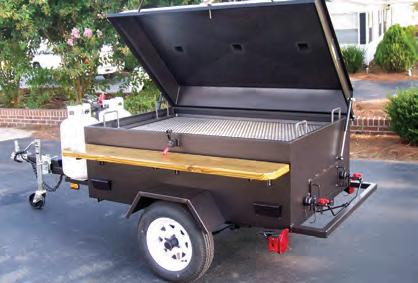














Now stronger and even more durable - the PENN® Battle® IV continues its tradition of being the workhorse of saltwater spinning reels. Newly upgraded with the Hydro Armor™ System and additional seals, the Battle IV is even more protected against saltwater intrusion and corrosion. An updated design eliminates through-holes in the spool body to further protect the reel from unwanted debris infiltrating its body and handle. Available in nine sizes and select high speed models, you can count on the Battle IV to have your back in any fight. PENN. LET THE BATTLE BEGIN™
By Ben Martin, Editor in Chief
Angling is more than just catching fsh—it’s a deeply rooted tradition that transcends generations, embodying a way of life, an art, and a profound source of pride. Tis pride isn’t merely in the size of the catch but in the entire experience, the skills refned over time, and the deep connection with nature.
Central to this pride is the mastery of technique. Whether it’s fy fshing in a mountain stream, casting a net in coastal waters, or patiently waiting with a rod and reel on a quiet lake, angling techniques require patience, practice, and a deep understanding of the environment. Anglers take pride in perfecting their skills—learning to read the water, understanding fsh behavior, and selecting the right equipment. Each successful cast, cleverly tied knot, and well-chosen lure is a testament to an angler’s dedication.
Te true pride in angling lies in the knowledge gained through experience. Seasoned anglers refect on the countless hours spent mastering their sport, from how a fy lands on the water to recognizing subtle signs of fsh activity. Angling is a journey of continuous learning, where each

trip ofers new lessons and insights, further fueling this pride.
Angling also nurtures a deep connection with nature. Being out on the water, enveloped in tranquility, allows anglers to develop a profound respect for the environment. Pride in angling is ofen linked to this connection, as anglers feel a sense of responsibility toward preserving waterways and fsh populations for future generations.
Tis respect for nature is vital to the angling tradition. Anglers ofen become conservation advocates, understanding that their sport’s enjoyment is tied to the environment’s health. Tus, pride in angling also includes a commitment to sustainable practices, ensuring that fsh stocks are maintained and habitats remain unspoiled.
For many, angling is a tradition passed down through generations. Te pride in angling is not just personal but a continuation of family or community heritage. Memories of fshing trips with parents or grandparents are cherished, and the skills learned are ofen passed on to the next generation. Tis sense of continuity creates a

bond that is both personal and collective, linking individuals to their past while forging connections with future anglers.
Te pride in being part of such a longstanding tradition is immense. Anglers feel a deep responsibility to honor the practices and ethics taught by their predecessors; ensuring the spirit of angling is preserved. Whether teaching a child to tie a knot, sharing stories of great catches, or passing on the secrets of a favorite fshing spot, the pride in angling is about nurturing a love for the sport that endures across time.



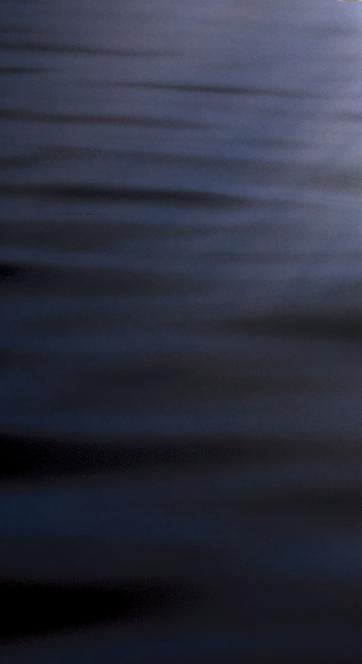








You’re looking at it! Furuno’s award-winning Radar gives you clarity & target separation like no one else. Don’t take our word for it. See for yourself. Scan here, and we’ll show you! DRS4DNXTDRS6ANXT





Selecting the right cast net is crucial for successful fshing. Here are a few tips to help you choose the best net for your needs.
1. Water Depth
Water depth afects the size of the net you should use. In shallow waters, opt for a smaller net with a shorter radius for easier control and retrieval. For deeper waters, a larger net covers more area, increasing your catch potential, but it may be harder to handle.
2. Targeted Fish Species
Te type of fsh you’re targeting determines the mesh size you need. Smaller fsh, like baitfsh or shrimp, require a smaller mesh to prevent escape. Larger fsh beneft from a larger mesh, which reduces water resistance and prevents the fsh from tearing the net.
3. Casting Ability
Your skill level should infuence your choice of net. Beginners should start with smaller,

lighter nets, which are easier to cast and control. Experienced anglers might prefer larger nets that cover more area, though they require more strength and technique.
4. Strength and Weight
may lack durability.
5. Mesh Size
Representatives from Tennessee Wildlife Resources Agency, Tennessee Department of Tourist Development, and Tennessee State Parks celebrate the ribbon cutting of the Bill Dance Signature Lakes project at the Bassmaster Classic in Knoxville on March 25, along with the project’s namesake. Photo Courtesy of the Tennessee Department of Tourist Development:
Balancing strength and weight is key. Te net must be strong enough to handle the catch but light enough for comfortable use. A heavy net can quickly become tiring, while a too-light net
Choose a mesh size based on the fsh species and environment. Smaller mesh sizes are better for small fsh, while larger meshes suit bigger fsh and allow the net to sink faster.
By considering water depth, target species, casting ability, and net strength, you can choose a cast net that enhances your cast netting success.






















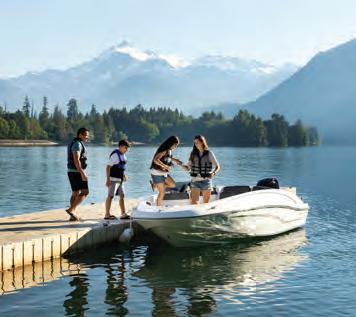





Embarking on the open water is an exhilarating experience, flled with the promise of adventure and relaxation. Whether you’re a seasoned sailor or a weekend cruiser, protecting your vessel with proper insurance is not just a choice—it’s a necessity. Explore the reasons why every boat owner should prioritize boat insurance for a worry-free voyage.
The open water can be unpredictable, with unexpected storms, collisions, or other potential accidents. Boat insurance can give you fnancial protection if there is damage to your vessel, providing coverage for repairs or replacement.
Accidents on the water can result in damage to other boats, docks, or even injuries to passengers. Boat insurance offers liability coverage, which can pay for damages or injuries you’re liable for while boating, up to specifed limits, and lawsuit costs if you’re sued. This includes damage you cause to another watercraft or if someone on or near your boat is injured and you’re found to be legally responsible.
Unfortunately, boat theft and vandalism are realities that boat owners face. Boat insurance has comprehensive and collision coverage that can protect you against events outside of your control, including theft and vandalism.
Accidents on the water may lead to injuries for you or your passengers. Boat insurance offers a range of optional medical payments coverage limits, helping to cover medical expenses if you are in an accident or someone is hurt on your boat, regardless of fault.
If you fnanced the purchase of your boat, most lenders require insurance coverage to protect their investment. Having boat insurance not only fulflls these requirements but also gives you peace of mind knowing that your fnancial interests are safeguarded.


Some water municipalities and marinas may require proof of insurance for docking or accessing certain areas. Boat insurance allows you the fexibility to explore different destinations without worrying about entry restrictions.
Emergency towing and assistance
Progressive boat insurance can include optional Sign & Glide® On-Water Towing coverage. If your boat is disabled or breaks down on the water, Sign & Glide® pays for on-water towing, jump starts, soft un-groundings, and fuel delivery.
Wreckage removal
If your boat sinks, Progressive boat insurance will cover the cost of removing your boat from the water (if removal is legally required).
Investing in boat insurance is not just about protecting a valuable asset; it’s about safeguarding the memories, experiences, and joy that come with your on-water adventures. Don’t let unforeseen circumstances disrupt your journey—navigate with confdence, knowing that Progressive boat insurance has you covered. Ensure a smooth and worry-free voyage, because when it comes to your boat, peace of mind is the ultimate luxury.
Scan to get a quote in as little as 4 minutes
learn more.




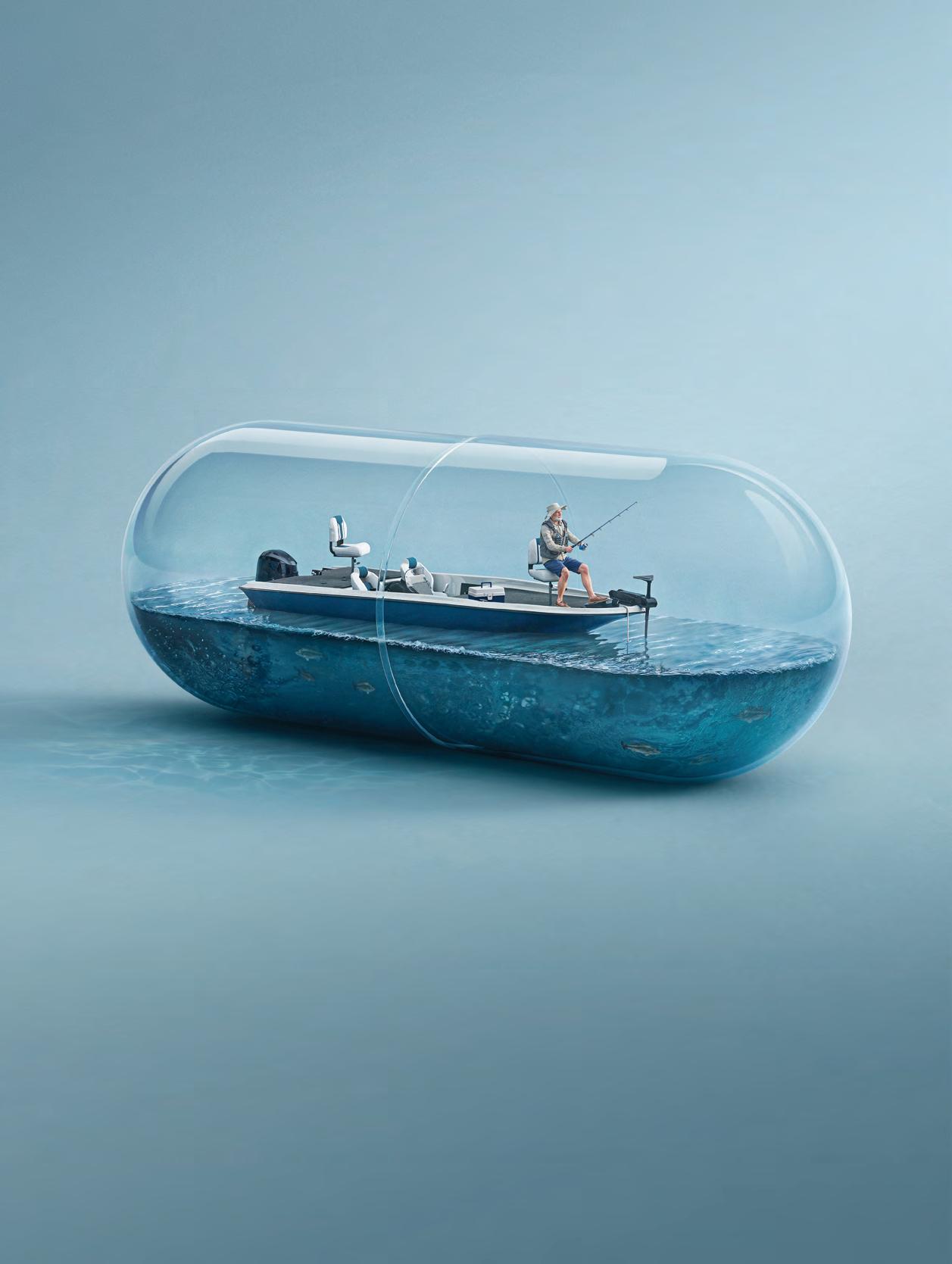


















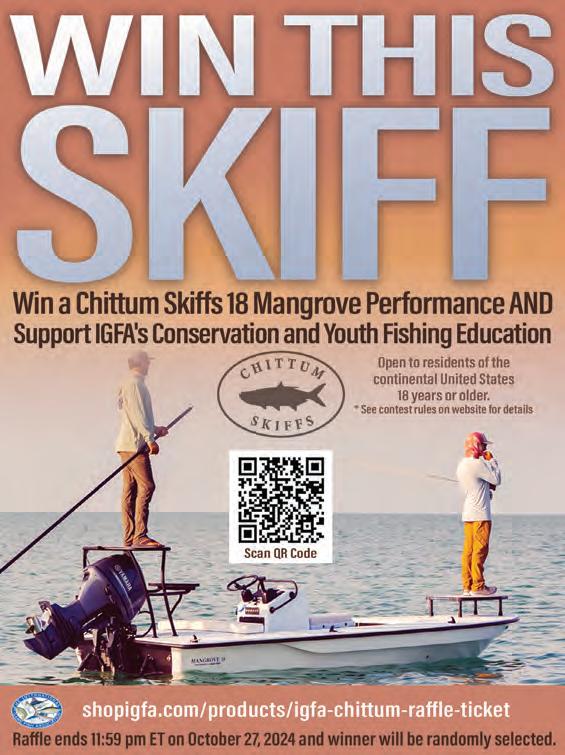



ITim Barefoot
t’s kinda like the old Byrds song “For everything, there is a season…”
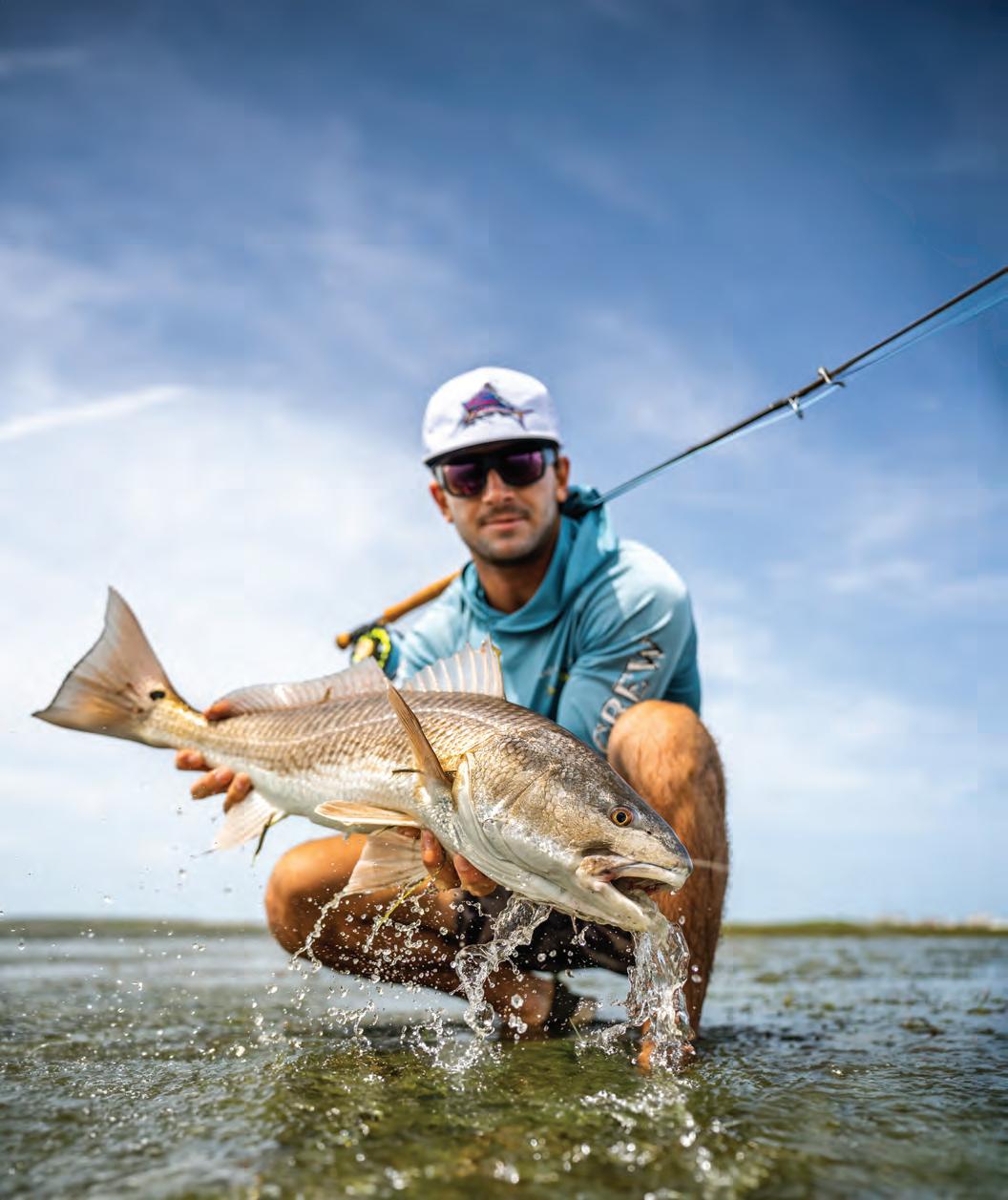

It could not be more true for the month of October, and the season for the shrimp, white shrimp to be specifc. Te (white) shrimp will start to “march” from the sounds towards the inlets and into the ocean. Tey will do this march against the current towards the ocean at night mainly. Tis is the very reason we fsh and catch shrimp at night. With the new LED lights, you can produce hundreds and even thousands of lumens with very low wattage/battery drain.
Do your own research, but I’ve found the Illumisea brand to be cost efective and super bright. When you fre up the lights, you will attract the shrimp. When you have the shrimp, you have the fsh. Pretty simple concept. I’m not saying the fsh will not eat mullets, menhaden, cigar minnows and sardines, or whatever is prevalent in your location, but what I am saying is they will key in on the shrimp and become pretty darn picky if there are a lot of shrimp present. Tey don’t have to be huge shrimp,
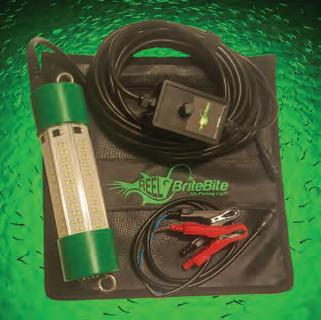

just a shrimp. I have seen really nice trout eating (keying on) the very small ones at times. If you can fnd the large 15-18 count then you’re good to go for whatever you want to catch. We call these “Tarpon Selects”. Everything in the water will eat these, from the average sized trout and drum to the largest snook and tarpon. Period. It’s the king of all baits, and October is the month to make the most of it.
For more information, visit barefootcatsandtackle.com and check out his YouTube channel.
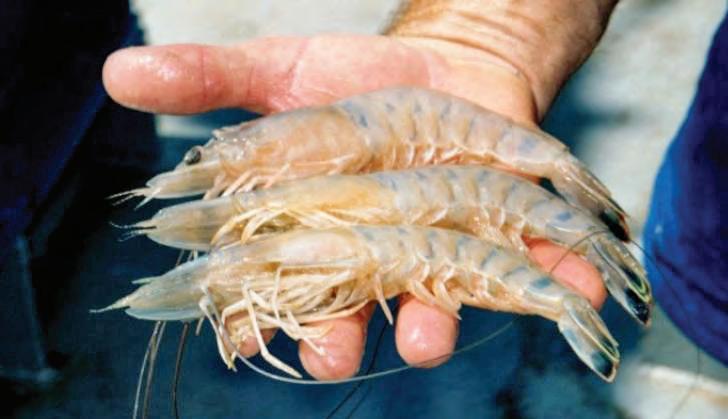
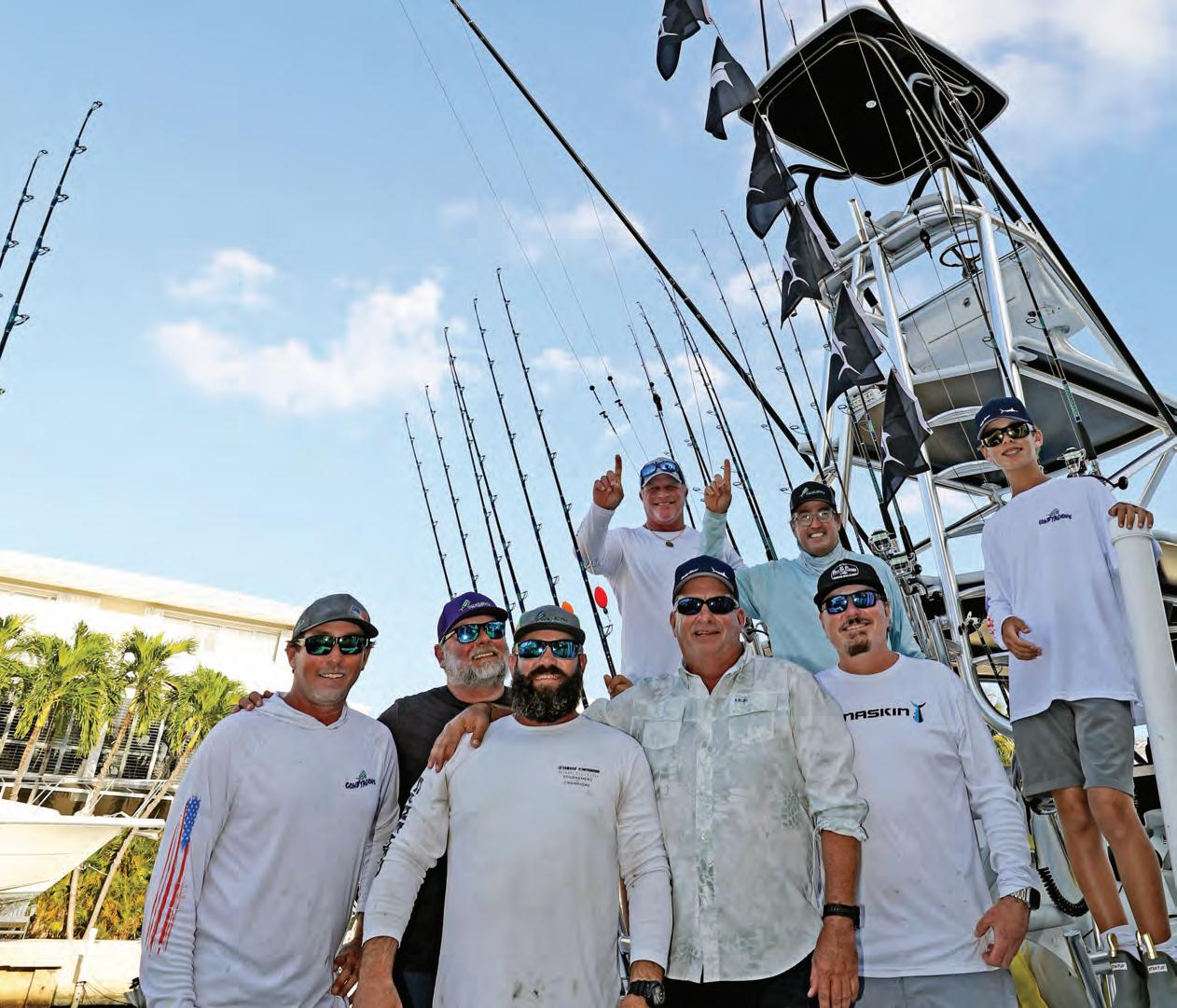










Let’s dive into why proper CPR (Catch, Photo, Release) fshing is so important for the future of our fsheries. For most anglers, fshing isn’t just a hobby—it’s a lifestyle, one we hope to pass down to future generations. But that requires us to be good stewards of the waters and ensure the fsh we release have the best chance of survival.
Here’s how to give your catch the best shot at thriving post-release, focusing on fve key areas of fsh health:
1. Gills: Gills are vital for fsh to breathe, and damage here can be fatal. Always use in-line circle hooks and avoid holding fsh by the gills. If a fsh is deeply hooked, it’s better to cut the line.
2. Skin: Fish skin acts as a barrier against bacteria and toxins. Pre-wet your hands, deck, and landing nets before touching a fsh to protect its slime layer. Avoid using cloths or bringing a fsh in too quickly to prevent damage.
3. Jaw: A damaged jaw can prevent a fsh from feeding. Never hold large fsh by the jaw alone, and avoid using barbed hooks for catch-and-release.
4. Internal Organs: Fish are not built for vertical positioning. Always support larger fsh horizontally to prevent damage to their internal organs.
5. Eyes: Fish rely heavily on their vision. Be cautious not to scrape or touch their eyes during handling.
Perfecting Your Fish Photo: Capturing that perfect fsh photo is satisfying, but it’s important to do it safely. Always face the fsh and yourself toward the light, and be mindful of what’s in the background. For solo anglers, plan ahead with a camera mount and practice using a timer or video mode.
Catch, Photo, and Release Tools:
Having the right gear can make a big difference:
• Fish grips for securing the fsh
• Needle-nose pliers for easy hook removal
• De-hooker to minimize contact
• Waterproof phone case to protect your gear
• Camera mount for solo photos




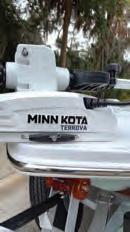

Darlene Shuman, President, Salt Strong Tampa Chapter posing with a 43 inch redfsh prior to quickly releasing it in Venice, LA.

Being a responsible angler means practicing and promoting proper catch, photo, and release techniques. Let’s all work together to protect our fsheries for future generations, educating others along the way.
And remember—if you see someone holding a fsh incorrectly, kindly guide them, don’t shame them. We’re all here to enjoy the sport and preserve it for years to come.
Te Salt Strong Fishing Club is an inspiration for inshore saltwater anglers. Salt Strong chapters are located from Texas to Florida to the Carolinas and ofer club members and their guests the opportunity to meet local anglers, learn from informative speakers, participate in conservation activities, and win awesome giveaways.
Visit SaltStrong.com and SaltStrongAlliance.com to learn more.

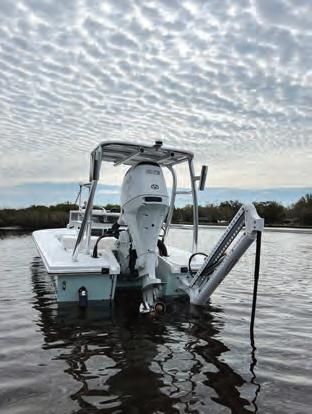

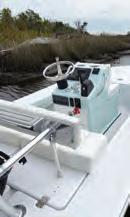

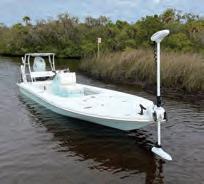


The Florida Fish and Wildlife Conservation Commission (FWC) has celebrated a major achievement with its TrophyCatch program reaching 15,000 approved trophy bass catches. Launched in 2012, TrophyCatch invites anglers to submit photos and documentation of bass weighing 8 pounds or more. Te program aims to enhance understanding and conservation of Florida’s bass population while rewarding participants for their impressive catches.
Tom Graef, Director of FWC’s Division of Freshwater Fisheries Management, highlighted the milestone as a testament to both the enthusiasm of Florida’s anglers and the state’s exceptional fshing opportunities. He noted that the data collected is crucial for ongoing conservation and management eforts.
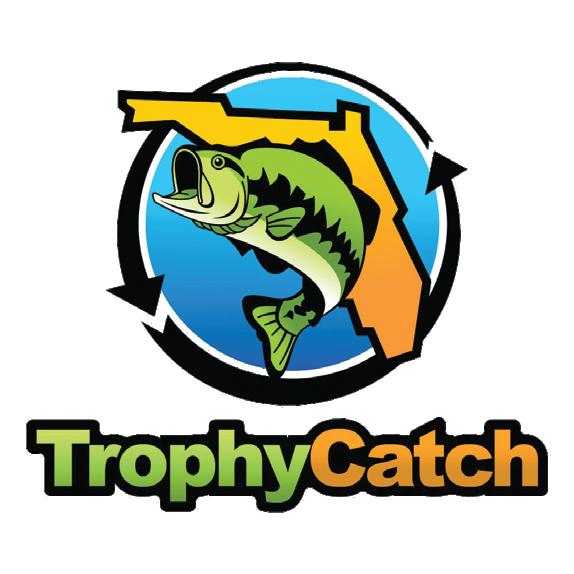
Te program’s success refects Florida’s status as a premier bass fshing destination. It gathers valuable data on bass sizes, weights, and locations, which aids in managing and sustaining the state’s fsh populations. Industry partners such as Bass Pro Shops, Mercury Marine, and Phoenix Bass Boats have been instrumental in supporting TrophyCatch, rewarding anglers and contributing to freshwater management.
TrophyCatch is not just a promotional program; it’s a citizen-science initiative that helps in the conservation of trophy bass fshing. Anglers interested in participating and being included in this year’s boat drawing can visit TrophyCatch.com for more information and to register.
Te milestone of 15,000 trophy catches underscores the program’s success and the strong community of anglers dedicated to preserving Florida’s bass fshing heritage.


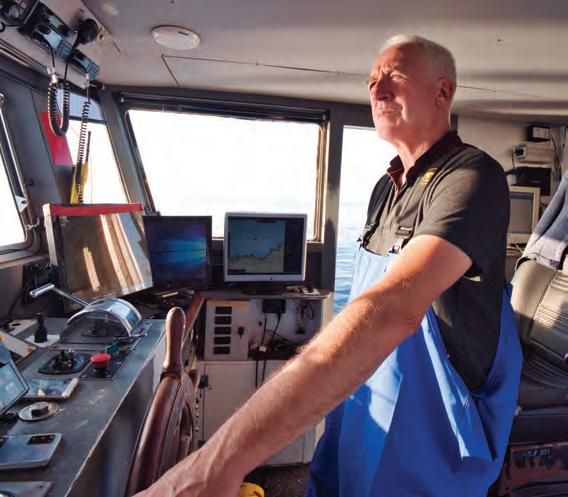

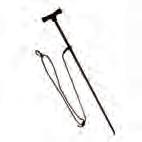
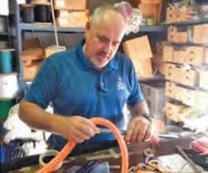


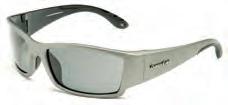





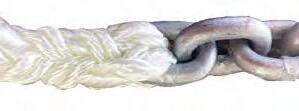

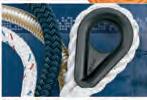

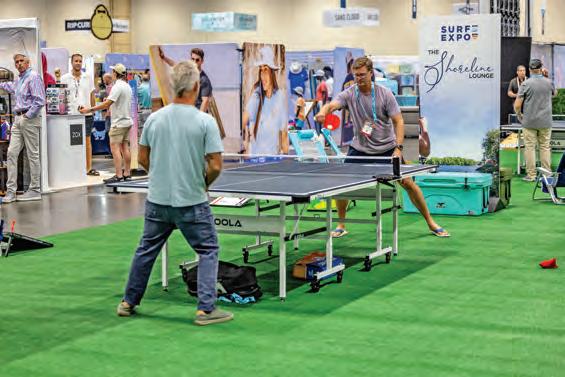

Surf Expo, the premier watersports and coastal lifestyle tradeshow, will return to the Orange County Convention Center in Orlando, Florida, from January 8-10, 2025. Te event will feature an expansive selection of exhibiting brands, a full lineup of events, and great networking opportunities. “We had an exceptional September show, which has only heightened our excitement for what’s to come in January,” said Surf Expo Show Director Roy Turner. “From major brands to emerging start-ups, retailers can connect with key players and explore the latest innovations. We are excited for the January show foor to be flled with energy as brands showcase their products to retailers,” adds Turner.
Surf Expo is the go-to market for watersports and outdoor retailers to explore the newest styles and trends, ofering the opportunity to stock your shelves with the latest in marine related products, top surf brands, hard goods, apparel, footwear, swimwear, accessories, gifs, and souvenirs. Retailers can discover the newest brands and products related to fshing, surfng, paddling, hiking, camping, wake surfng, tubing, or simply enjoying the sun. Surf Expo provides everything needed for customers who are passionate about the waterman and outdoor lifestyle.
“Consumers today are looking for unique and new products. Surf Expo allowed us to shop and locate lot of interesting fnds to bring some freshness into our store so we can give our shoppers a reason to keep coming back.” says Steve Green of High Mountain Sports.
Te January 2025 show will feature brands across multiple categories including the Shoreline category. Shoreline at Surf Expo features brands that specialize in inshore and ofshore apparel and accessory products; sportswear, technical apparel and gear, footwear, outerwear, and watersports hardgoods as well as games and accessories for enthusiasts to transition from a day on the water to stretching out on land. It caters to businesses involved in outdoor activities and recreation, creating valuable crossover opportunities for buyers and manufacturers.
Surf Expo fosters community, commerce, and connections. Te atmosphere at the event fosters the ideal environment for direct engagement between retailers and brands. Green added, “We love the vibe at Surf Expo. It’s easy to get serious business done with key players, but not so serious that you can’t enjoy happy hours and events at the show too. We were able to connect with multiple sales managers and met several founders at the September show.”
Surf Expo continues to support and enhance growth and innovation within the watersports and coastal lifestyle industries. In January, Surf Expo will feature a full schedule including daily fashion shows, retailer learning labs, networking events including happy hours and parties as well as the 2025 Florida Shape Of
For more information about the show, or to register to attend January 8-10, 2025 in Orlando, visit www.surfexpo.com.




By CAM Staf

Stone crab season in Florida is a much-anticipated event, drawing both commercial and recreational anglers eager to harvest these prized crustaceans. Te season typically runs from October 15 to May 1, a period carefully regulated to ensure the sustainability of the stone crab population. With its delicious, sweet meat, the stone crab is a sought-afer delicacy, and understanding the rules, techniques, traps, and bait is crucial for a successful and responsible harvest.
Many anglers opt to dive for stone crabs, using snorkeling or scuba gear to search for crabs in their natural habitats. Stone crabs typically reside in rocky or muddy bottoms, hiding in crevices or burrows. Divers must exercise
caution, as the crabs’ strong claws can deliver a painful pinch.
Te Florida Fish and Wildlife Conservation Commission (FWC) enforces strict regulations to protect stone crab populations. Only the claw of the stone crab may be harvested, as the crabs can regenerate lost limbs. When retrieving a crab, it is essential to handle it gently to avoid injuring the creature or causing unnecessary stress. Te claw should be twisted of carefully, applying steady pressure at the joint until the claw releases.
It is illegal to remove both claws from a single crab, and the harvested claw must meet a minimum size requirement of 2-7/8 inches, measured from the tip of the claw to the frst joint. Crabs must be returned to the water immediately afer the claw is removed. Improper removal can result in the death of the crab, which is both unethical and a violation of FWC regulations.
Te FWC also limits the number of traps allowed. Recreational anglers can use up to fve traps, while commercial fshers are permitted more, provided they hold the appropriate licenses. Each trap must be clearly marked with the owner’s information, including a buoy with the angler’s name and address. Additionally, traps must be checked at least once every fve days to ensure that crabs are not kept for too long, which could lead to their death or reduce their ability to regenerate claws.
Stone crab traps are specially designed to capture these crustaceans without causing harm. Te traps are typically rectangular and made of plastic or wood, with openings that allow crabs to enter but make it difcult for them to escape. Inside, the trap is baited with food that attracts the crabs, such as fsh heads, chicken necks, or other types of seafood. Te scent of the bait lures the crabs into the trap, where they remain until the trap is retrieved.
When setting traps, location is key. Stone crabs are ofen found in shallow waters near jetties, docks, mangroves, or rocky shorelines. Traps should be placed in areas where crabs are known to feed, ideally on a sandy or muddy bottom where the crabs feel safe.
Stone crab season in Florida is more than just an opportunity to enjoy a delicious seafood delicacy; it is a tradition steeped in respect for the environment and the species. By following the FWC’s rules and regulations, using humane harvesting techniques, and selecting the right traps and bait, anglers can enjoy a successful and sustainable stone crab season. Understanding these essential aspects of stone crab harvesting will enhance your experience and contribute to the ongoing preservation of this valuable resource.
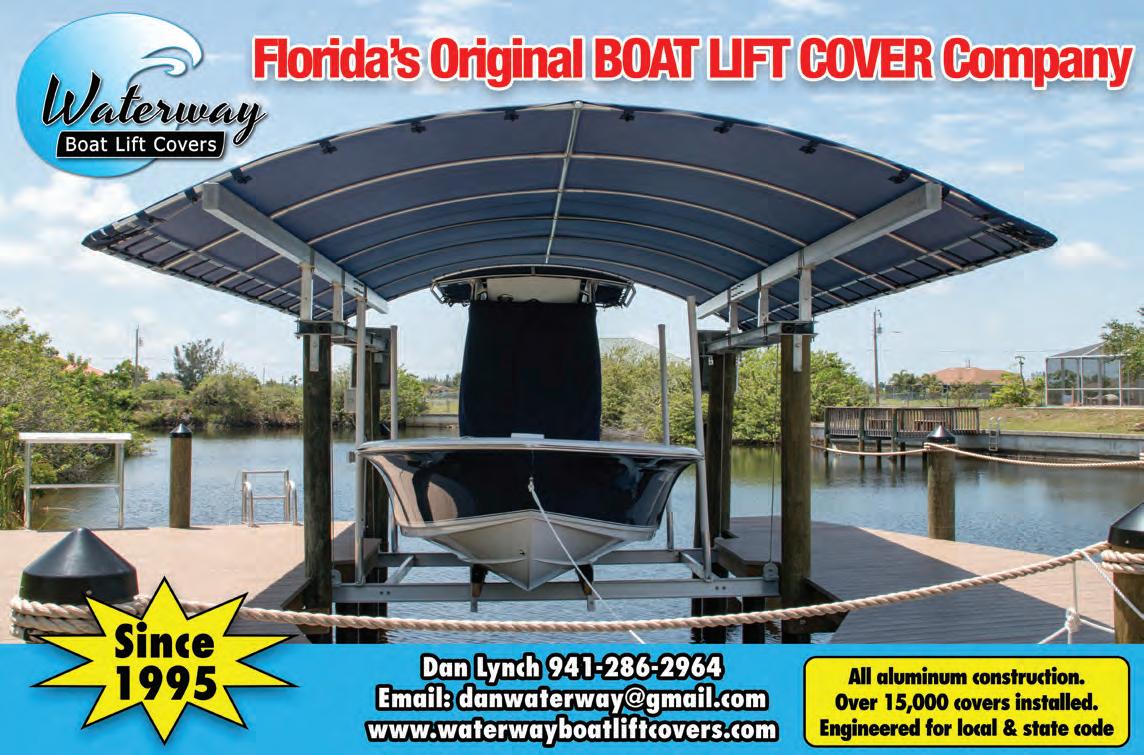

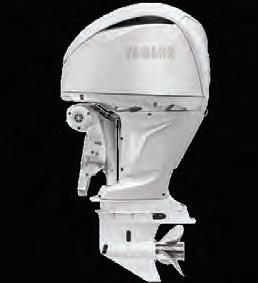
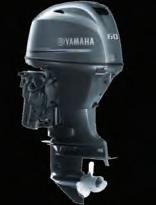

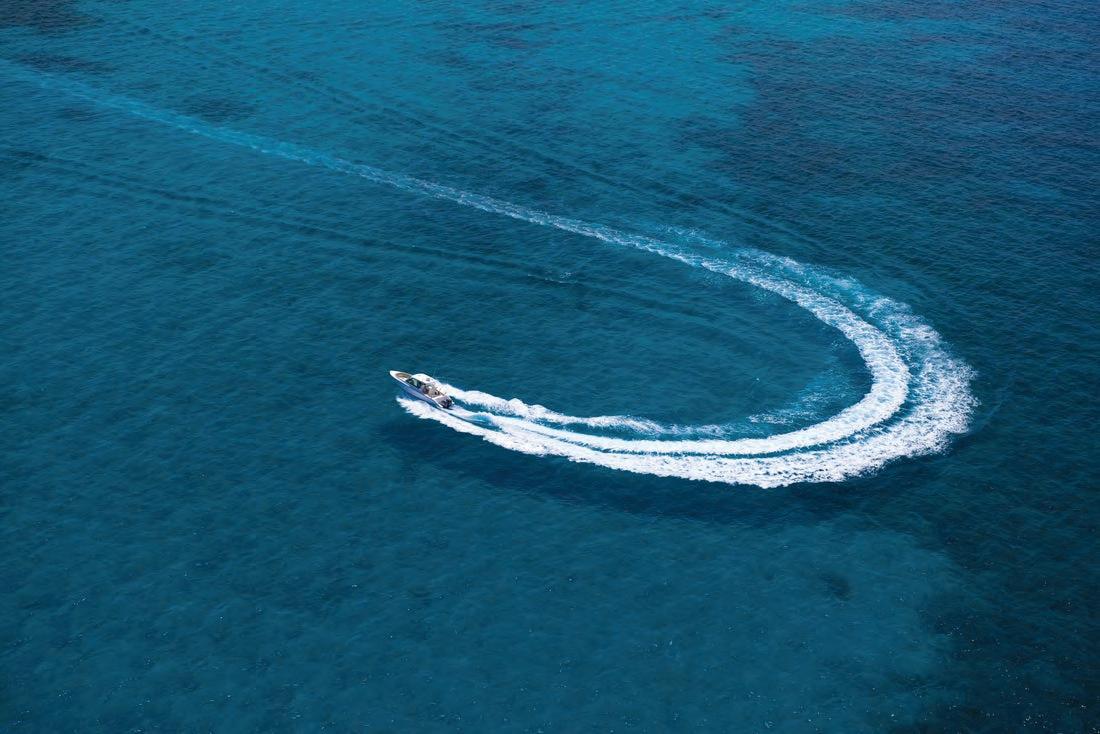


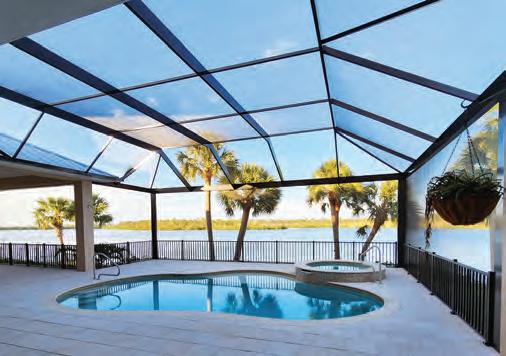




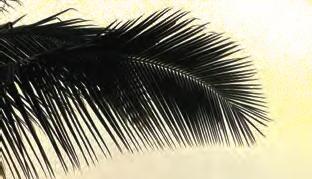


By
It is undeniable that our coastal ecosystems are in serious trouble.
Scientists and professionals oscillate between hope and despair and between proposing traditional and interventional remedies. What is absolutely clear, is that biomes are changing and baselines are shifting. We all sense an accelerating rate of change, yet it is natural to normalize our behaviors and perception of our surroundings.
Those of us that live along the Indian River Lagoon have recently been treated to a myriad of mixed messages about our natural places. Seagrasses seem to be sporadically
recovering naturally, and in some places, turbidity is low and other measures of water quality are closer to target metrics. But in other places recovery is less obvious. Our nearshore coral reefs are in poor health. Some of our mangrove habitat is healthy and seeding in bumper stock, while others still struggle with fungal infections and drowning. We are learning a lot about species interactions, stressors and conditions conducive to sustaining healthy ecosystems throughout our incredibly diverse region. We are discovering new nursery techniques and implementing new technologies
to actively accelerate recovery.
There are many perplexing discoveries too. There are increasing numbers of species changing their range and distribution as climate and local conditions change. Some species are more pollution tolerant and will out compete with the indigenous species. Some of these are toxic phytoplankton, like Gambierdiscus, which may be responsible for making elasmobranchs and bony fish swim in circles. Harmful algal blooms are not only a risk for human health, but they also indicate imbalance in the natural system.

just how disconnected our state government, and particularly our Department of Environmental Protection, is from actually protecting our natural wild places. The shameful Great Outdoors Initiative proposed golf courses in rare, sensitive and protected areas, hotels on pristine beaches, pickleball and other recreational amenities in 9 state parks. The DEP even fired the courageous whistleblower.
Confidence in our regulatory system providing the protections and benefits that we need, have been shaken too. Many folks assumed that a long fought for new Lake Okeechobee Schedule Operating Manual when finally adopted would be a panacea, only to discover that our own enlarged basin runoff is harmful to the estuary and that the new reservoirs and STAs may be inadequate. We also are learning that the large reservoir south of Lake Okeechobee may prioritize Agricultural Area runoff over Lake Okeechobee water. But, most alarmingly, Floridians discovered
Our state government is failing to provide the protections necessary to protect and conserve our natural resources that provide the resilience upon which our future depends. We continually must turn to Federal agencies to compel the state to conform to higher standards to protect human and environmental health. The Indian River Lagoon and nearshore reef deserve the Federal protections of Marine Protected Area status or that of a National Park. They are so important, rare and unique; they deserve no less.

If you would like to learn more about the benefits of supporting Indian Riverkeeper, email Executive Director Jim Moir at IndianRiverKeeperFL@gmail.com or call (772) 341-4953.
DAY TIME HEIGHT
1TU 2:00 AM 0.56 L
8:30 AM 2.88 H
2:19 PM 0.6 L
8:44 PM 2.85 H
2W 2:34 AM 0.49 L
9:06 AM 2.94 H
2:54 PM 0.62 L
9:17 PM 2.86 H
3TH 3:07 AM 0.45 L
9:42 AM 2.97 H
3:28 PM 0.66 L
9:50 PM 2.83 H
4F 3:39 AM 0.45 L 10:18 AM 2.96 H
4:01 PM 0.72 L
10:23 PM 2.78 H
5SA 4:11 AM 0.48 L
10:54 AM 2.92 H
4:34 PM 0.8 L 10:57 PM 2.71 H
6SU 4:43 AM 0.53 L
11:32 AM 2.84 H
5:08 PM 0.89 L
11:32 PM 2.63 H
7M 5:19 AM 0.59 L 12:13 PM 2.75 H
5:46 PM 1 L
8TU 12:10 AM 2.55 H
6:00 AM 0.66 L 12:59 PM 2.66 H
6:31 PM 1.09 L
9W 12:55 AM 2.48 H
6:51 AM 0.72 L
1:52 PM 2.59 H
7:27 PM 1.16 L
10TH 1:51 AM 2.44 H
7:53 AM 0.77 L
2:54 PM 2.57 H
8:36 PM 1.16 L
11F 2:58 AM 2.46 H
9:04 AM 0.76 L
3:59 PM 2.62 H
9:48 PM 1.05 L
12SA 4:12 AM 2.55 H
10:15 AM 0.69 L
5:01 PM 2.73 H
10:52 PM 0.84 L
13SU 5:21 AM 2.74 H
11:18 AM 0.57 L
5:58 PM 2.88 H
11:48 PM 0.58 L
14M 6:23 AM 2.97 H
12:15 PM 0.44 L
6:50 PM 3.04 H
15TU 12:40 AM 0.3 L
7:20 AM 3.21 H
1:08 PM 0.32 L
7:39 PM 3.17 H
16W 1:29 AM 0.05 L
8:13 AM 3.41 H
1:58 PM 0.25 L
8:27 PM 3.27 H
17TH 2:18 AM -0.12 L
9:04 AM 3.53 H
2:48 PM 0.24 L
9:14 PM 3.3 H
18F 3:06 AM -0.2 L
9:53 AM 3.55 H
3:36 PM 0.29 L
10:02 PM 3.27 H
19SA 3:54 AM -0.17 L
10:43 AM 3.48 H
4:26 PM 0.39 L
10:51 PM 3.19 H
20SU 4:45 AM -0.05 L
11:34 AM 3.33 H
5:17 PM 0.54 L
11:41 PM 3.05 H
21M 5:38 AM 0.14 L
12:27 PM 3.14 H
6:12 PM 0.71 L
22TU 12:35 AM 2.88 H
6:35 AM 0.35 L
1:23 PM 2.94 H
7:13 PM 0.87 L
23W 1:33 AM 2.72 H
7:39 AM 0.56 L
2:23 PM 2.77 H
8:19 PM 0.97 L
24TH 2:36 AM 2.59 H
8:46 AM 0.71 L
3:25 PM 2.65 H
9:27 PM 1 L
25F 3:44 AM 2.52 H
9:53 AM 0.79 L
4:27 PM 2.61 H
10:30 PM 0.95 L
26SA 4:50 AM 2.53 H 10:53 AM 0.82 L
5:23 PM 2.61 H 11:23 PM 0.85 L
27SU 5:48 AM 2.59 H 11:45 AM 0.81 L 6:11 PM 2.64 H 28M 12:09 AM 0.73 L 6:38 AM 2.68 H 12:30 PM 0.78 L 6:52 PM 2.68 H
29TU 12:49 AM 0.61 L 7:21 AM 2.78 H 1:11 PM 0.75 L 7:30 PM 2.72 H 30W 1:26 AM 0.51 L 8:00 AM 2.87 H 1:49 PM 0.72 L 8:06 PM 2.75 H 31TH 2:01 AM 0.43 L 8:37 AM 2.93 H 2:25 PM 0.71 L 8:42 PM 2.75 H


The Florida Fish and Wildlife Conservation Commission (FWC), in partnership with Wildlife Forever, is hosting the 2024-2025 Art of Conservation Fish Art Contest. The annual program invites youth from around the world to connect with nature and learn about fish and aquatic habitats while exploring creative art and writing. Since its founding in 1997, the Fish Art Contest has reached over 85,000 youth in 46 countries building future stewards of the outdoors.
The free contest is accessible to students from kindergarten through 12th grade. Each year, thousands of entries pour in from across the globe, reflecting the program’s widespread appeal and impact. Florida students can submit their artwork to Wildlife Forever using the Florida Fish Art Contest entry form page at MyFWC.com/FishArt.
SEBASTIAN (INLET)
TIME OFFSET
High Tide -48 min
Low Tide -24 min
HEIGHT OFFSET
High Tide .93 feet
Low Tide 1.0 foot
JENSEN BEACH (INDIAN RIVER)
TIME OFFSET
High Tide +2 hrs; 17 min
Low Tide +3 hrs; 4 min
HEIGHT OFFSET
High Tide .48 feet
Low Tide .92 feet
VERO (OCEAN)
TIME OFFSET
High Tide -55 min
Low Tide -35 min
HEIGHT OFFSET
High Tide 1.45 feet
Low Tide 1.36 feet
ST. LUCIE INLET TIME OFFSET
High Tide +55
Low Tide +1 hr; 42 min
HEIGHT OFFSET
High Tide 1 foot
Low Tide .50 feet
TIME OFFSET
High Tide -31 min
Low Tide -18 min
HEIGHT OFFSET
High Tide 1.14 feet
Low Tide 1.50 feet
JUPITER INLET
TIME OFFSET
High Tide -10 min
Low Tide -9 min
HEIGHT OFFSET
High Tide 1.08 feet
Low Tide 1.42 feet
“We are proud to support Wildlife Forever’s Fish Art Contest, a program that not only fosters creativity but also deepens young Floridians’ connection to our state’s rich aquatic heritage,” said FWC Commissioner Sonya Rood. “We are committed to preserving Florida’s natural resources by encouraging students K-12 to participate in this contest and celebrate the beauty of our waterways and wildlife while educating the next generation about conservation.”
One first place winner and one runner up will be selected for each grade bracket (kindergarten through third grade, fourth through sixth grade, seventh through ninth grade, and tenth through twelfth grade), one for illustrating the best freshwater fish species and one for the best saltwater fish species. Visit MyFWC.com/FishArt for more information on state prizing.
The 2024-25 contest is open for submissions until Feb. 28, 2025. The contest is supported by The Florida Nomad.
Participants can find more information, educational resources, and submission guidelines at MyFWC.com/FishArt.
Share your fishing photos with us and you might see them in our publications or on our website! Photos that show anglers using proper fish handling techniques and wearing life jackets are preferred. And be sure to submit your saltwater fishing photos to Catch a Florida Memory as well for a chance to earn prizes and recognition.
Fish must be handled properly. It is the responsibility of every angler to strive for 100-percent survival of released fish. An ethical angler:
• Handles their catch quickly with wet hands only
• Is careful not to poke fingers into eyes or gills
• Fully supports the body weight of the fish by cradling it horizontally
• Keeps large fish in the water to avoid injuring their mouth or internal organs
• Always wears a life jacket while aboard a vessel RESOURCES
• Fish Handling Guidelines: https://myfwc.com/ fishing/saltwater/outreach/fish-handling/
• Catch and Release Brochure: https://myfwc.com/ media/14479/catchandrelease.pdf
• Photo Guidelines: https://myfwc.com/media/1365/ photoguidelines.pdf
• All submitted photos may be used in any FWC publication or on the website
• Images must be at least 300 dpi

• Files 2 MB or larger preferred
• Preferred formats include .jpg or .tiff files
• Images should not be embedded in a Word document, .pdf or .ppt, etc.
Email photos to Saltwater@MyFWC.com along with a signed FWC Permission to Use Image form. (https:// myfwc.com/media/20525/permission-to-use-imagesent-to-fwc.pdf)
Permission to Use Image forms can be submitted via:
• Email (by scanning or taking a photo of the form): Saltwater@MyFWC.com
• Fax: 850-487-4847




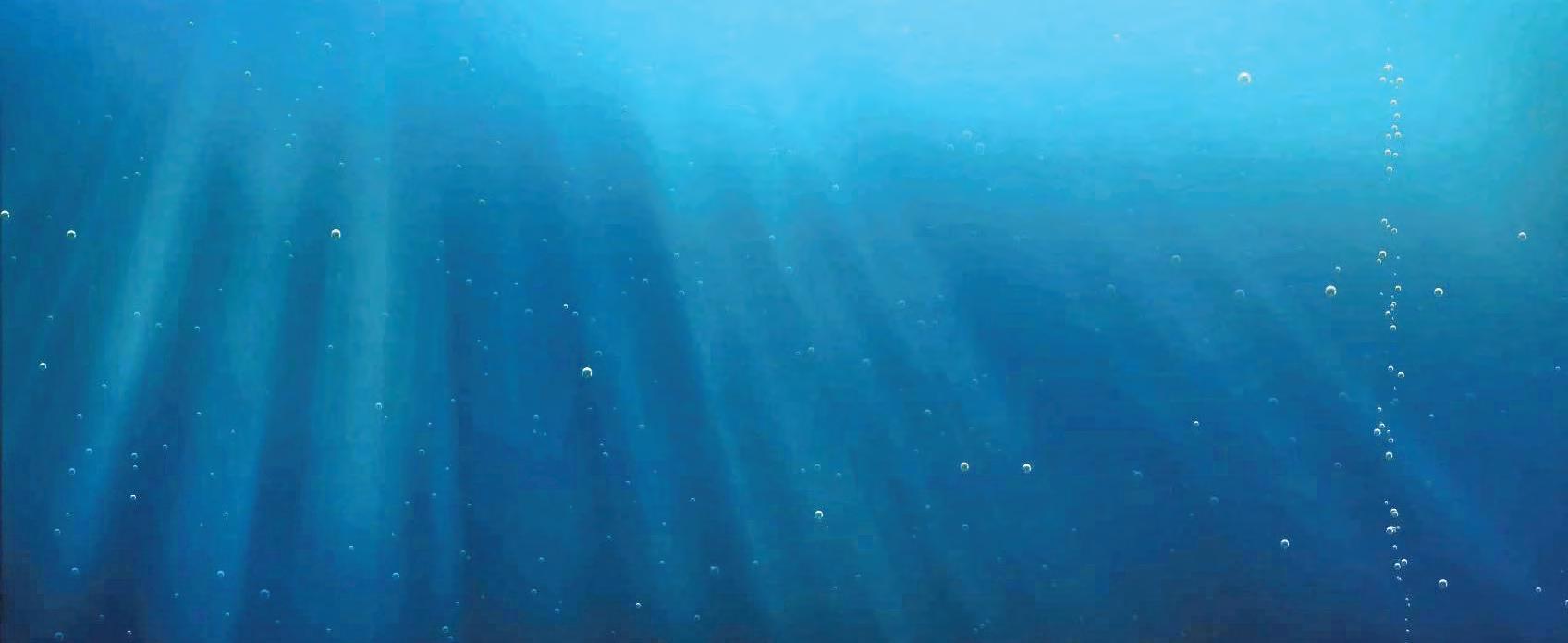




Sea Tow is happy to extend it’s service to include tows from Nothern Bahamas, Green Turtle, West End Marsh Harbour, Hope Town and Grand Cay to the U.S.
Whether you need a timely tow or help offshore, Sea Tow Captains are standing by 24/7.
Why wait? Join today and get 2 months free! (That’s a $28 value!) Use discount code: TCT. Join Sea Tow Treasure Coast \ 772-225-3144 800-4-SEATOW
seatow.com/local/treasurecoast
Capt. Scott Fawcett
Off the Chain Fishing Charters (772) 285-1055 offthechainfishing.com fishscottyf@bellsouth.net
Youdon’t have to wait all the way to the 31st to get your treats this October. Sailfish, blackfin tuna, dolphin, wahoo, kingfish and cobia along with a good catch of snapper will highlight this month, and I’m going to say this will be the best fall and winter we’ve had in over a dozen years. The conditions we have off the Treasure Coast right now between bait, water quality and resident fish this summer are not only providing great action already, but setting us up for an epic season baring any storms. The shrimp boats are already here and when you find the right one it can be like a scene right out of National Geographic, but don’t focus all your time on them.
Mostly, fish will be migrating down the edges, weed lines, and color changes as the water starts to cool above us and the winds start to come
out of the northwest. If you can’t find an obvious weed line or condition, fall back to fishing over structure, the six and eight mile reefs, the Hill, various artificial wrecks along with scattered pieces of live bottom will at times hold bait and in turn bigger fish.
Knowing what’s below and around you is probably the most important part of the game so we wear Costa Del Mar polarized sunglasses with the 580 lens in various shades depending on the lighting and for our fish finder/ sonar we use HumminBird apex units with their side imaging and Airmar transducers giving us total spatial awareness.
Whether we’re trolling or live baiting this month we use 15 pound line on super light 6’3 custom Blackfin Rods. They are made right here in Stuart Fla., and we’ve been using them since they started about 20 years ago and will continue to until we find something better. So many people don’t realize the importance of a well-matched rod to your style of fishing and these guys get it.
Whatever style of fishing you decide to do this month and whatever your target species is, I hope your next trip is Off The Chain. If you have any questions about setting up your boat or if you’d like to book a trip with us on one of our three, please give us a call today! Inshore, offshore, vacations. We would love to help you out.

MARTIN COUNTY INSHORE NEARSHORE
Capt. Jonathan Earhart
Chaos Fishing Charters (772) 341 – 2274
www.chaosfishigcharters.com jon@chaosfishigncharters.com
The 2024 fall mullet run is in full swing! This is my favorite time of year to fish here on the Treasure Coast. Big fish are plentiful and so is the bait. Break out the bigger spinning gear and a castnet to load up the livewells with fresh live mullet. It’s time to catch big fish!
Snook, tarpon, jacks, sharks,
redfish, flounder and sea trout are plentiful this month. Snook fishing around structure on outgoing tide has been great. Tarpon fishing around channel edges has been producing XXL sized tarpon on larger live and dead mullet. 8/0 BKK circle hooks are doing well with 80–100-pound Tsunami fluorocarbon leaders. I suggest snelling your knots to ensure a better hookup ratio on these larger tarpon.
Nearshore fishing has been excellent when you find mullet schools along the beach. Fish the edges of these mullet schools for steady hookups. Tarpon, snook, sharks, jacks, bluefish, and kingfish are to be expected this month when fishing nearshore beaches. I also like to walk the beaches this time of year

MARTIN COUNTY DEEP SEA
Capt. Rocky Carbia
Safari I Deep Sea Fishing
Pirates Cove Resort and Marina 4307 SE Bayview St. Port Salerno Reservations: (772) 334-4411 www.safari1deepseafishing.com
The local motion of October’s ocean will include the introduction of large schools of mullet into our fishing seascape. These baitfish will take up residence in Martin County`s estuaries, inlets, and surf zones. This seasonal movement of mullet and their arrival in our local waters, heralds the official beginning of fall and the journey that mullet undertake.
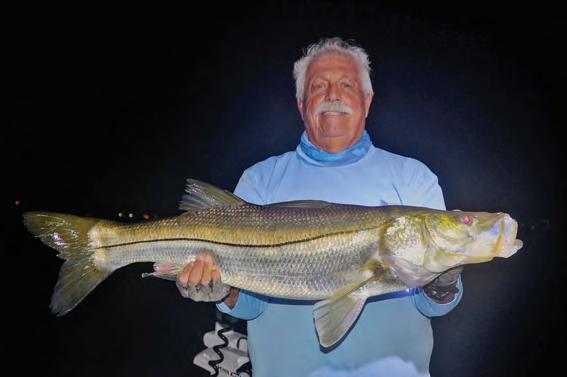
with a few of my favorite artificials at first light and around sunset, fishing these beach mullet schools can be a blast from shore. Fly fishing is also a great idea when the tarpon and snook are in close feeding on mullet in the first trough of the beach. Polar fiber mullet patterns work great and can produce plenty of action. Tight lines!
increase this month, making for a choppy offshore playing field. Near shore reefs in 50 to 60 feet of water will become the “go to zone” during these rougher days, allowing fishing crews to take it slow into choppy conditions and make the first offshore stop on a vast array of reef structures that are within three to four nautical miles of our St. Lucie Inlet (for GPS coordinates of these reefs, go to martinreefs.com).
Strategies that highlight bottom
fishing will continue to be highly desirable, as lane and mutton snapper will solidly populate these near shore bottom structures, along with grouper and other species of edible “ground fish”. Cobia will also be attracted to these same reef sites and become a prized “grocery trophy” for deep sea anglers this month. So, in October, explore the many varied reef sites that are just within a few miles of the inlet and round your fish up, close to home.

These schools of mullet and other baitfish have the tendency to attract and tow many species of hungry, traveling fish along with them, including pelagics like king and Spanish mackerel, cobia, dolphin, and sailfish. Resident species are in turn activated by the arrival of vast expanses of these baitfish and give local anglers a reference point for nailing down a good spot to fish. While these baitfish typically stay close in proximity to the surf and beach zone and points inside of the inlet (through the lagoon and river), they will sometimes be seen several miles off the beach. Many other species of migrating fish will arrive in the “deep sea zone” during October, as they are propelled by the same forces of nature that motivate baitfish into their seasonal journey. Wind velocities will noticeably

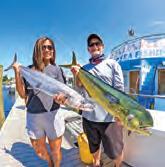
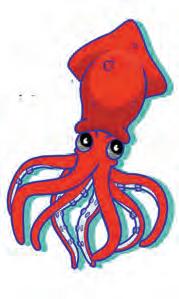




ST. LUCIE COUNTY OFFSHORE
Capt. Bo Samuel
Pullin Drag Charters
(772) 971-6661
facebook.com/Pullin-Drag-Charters catainbofishing@gmail.com
Fall and happy fishing!
Anglers are eagerly expecting a calmer October with somewhat cooler waters and cooler weather. With the annual mullet run in place, the bait is plentiful and hungry, predatory fish are actively following and feeding in these big schools. Snook, tarpon, redfish, jack crevalle, and sharks will be abundant around these massive schools of migrating mullet. Now is the time to fill the livewell and seize opportunities to target some of the highly prized trophy fish found in Fort Pierce.
Snook and tarpon are among the top game fish on the Treasure Coast, and both will be enjoying mullet meals as they move across our area. October is traditionally


a good month to hook up on a personal best. The snook bite should continue to be strong but finding that slot could be a challenge. Both snook and tarpon are known for a great fight with tarpon being very acrobatic when hooked. Tarpon are a catch-and-release only fishery and regulations state any tarpon over 40 inches must remain in the water. Take your photos quickly and follow good catch-and-release techniques to minimize stress on the fish and keep the population healthy.
Bottom fish, especially snapper and grouper, are still high on the salty grocery list and will begin to congregate with other species at the 50-to-100-foot reefs. Using a chum bag and throwing some cut bait behind the boat is highly recommended and will usually help tempt these energetic feeders off the bottom. Mangroves can be particularly active during a full moon so night fishing is an effective strategy. Since mangroves bite fast, you need to be ready to set your hook fast. As always, use enough weight to keep your bait on bottom.
October fishing is full of salty opportunities so make a plan to pursue your fall fishing goals. Come visit me at my home base, historic Little Jim Bait and Tackle, and we can




easily get your custom catching trip booked. Your support of other local bait and tackle shops like DeBrooks







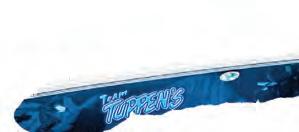



St. Lucie Flats Fishing Charters (609) 820-6257
www.stlucieflatsfishing.com
Anotheryear seems to be flying by! Winter is a few months away and the fall mullet migration is in full swing. Once again, this year, they started showing in the middle of August which is a bit early. The temps are starting to cool down a little bit, and I am looking forward to the next month as the mullet push through. Hurricane season is winding down and let’s keep our fingers crossed that we manage to stay out of the crosshairs for the remainder of the 2024 season.
The seagrass has made an exceptional come back this year. I have been seeing pinfish, mojarras, pilchards, and more in numbers that I haven’t seen in years mixed in the
grass. I’m cautiously optimistic that maybe our rivers’ health is taking a turn in the right direction. With the explosion of bait and sea grass, the numbers of trout we are catching have gone up exponentially. I am finding them in multiple historic locations, and in new areas as well. After seeing our fishery collapse, I practice 100% catch and release, and try to handle all of our trout with extreme care. My favorite way to target them is with topwaters like a Rapala Skitterwalk or Yo-Zuri Hydro Pencil at first light, then switch to soft plastics later in the morning. I am a huge fan of Z-Man soft plastics. Their 4-inch DieZel Minnow in the Beer Run color rigged on a jighead, or rigged weedless will catch everything, especially trout, and hold up to multiple fish.
The inlet, bridges, and surf are good areas to target as the mullet move through the area. If had a choice, I would choose late afternoon, into the evening to fish these areas. Boat traffic starts to
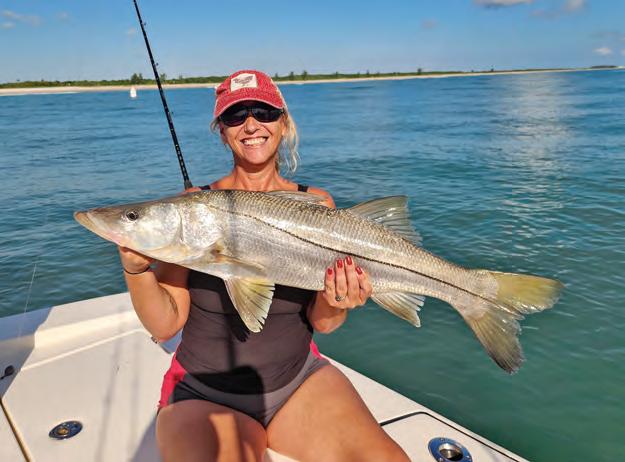
wane, and as the sun sets things can really come to life. I always like to position the boat up current of the bridge and sweep the lures through the shadow line. Certain lures will have better results depending on the speed of the current. For example, a Bomber Wind-Cheater works well
in slower stages of the tide, while the Rapala X-Rap does better when the current really starts to pull. Single hook lures like swim baits, or feathers are always a good option. October is a great month to enjoy the fishing options the Treasure Coast has to offer!
Pierce Fishing (772) 766-0191
through September with no major storms, just a lot of rain. As we get into October, and the cooler weather fronts start to rise upon us, we will see a different migration of the fish settling back into the more winter type patterns back out to the deeper reefs. You’ll be targeting the reefs in 75 to 120 feet of water. We will start to see the lane snapper school up and the triggerfish settle back on the bottom. The mutton snappers will be on the edges of the reef in the

on the reef.






time to settle back into a two hook “chicken rig” for lane snappers and triggerfish and your catch may even be spiced up with some porgies. Continue to fish with your small finger size live baits, grunt plugs with 40-to-60-pound leaders for mangrove and mutton snappers. This is also the last couple of months to get a shot at some grouper in the deeper reef areas of 130 to 220 feet of water.
We are finishing up our projects on Miss Fort Pierce. She has a completely new cabin interior, new bathrooms, and we will be giving her a completely new paint job. We will be continuing to return to sail seven days a week on our all-day schedule as more of our winter guests move back into the area for the season. We look forward to meeting you all on board.
Tight lines and be safe.


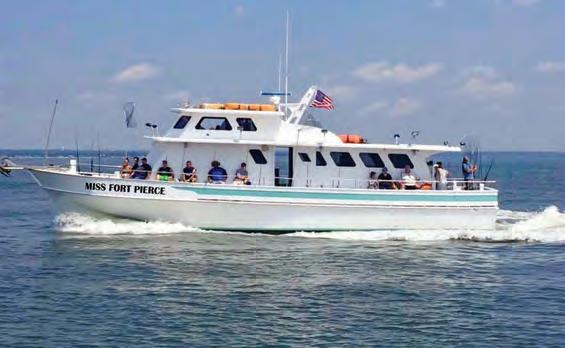
SEBASTIAN INSHORE
Capt. Gus Brugger
Pattern Setter Charters (772) 360-6787
www.WelcomeToSebastian.com
The Indian River Lagoon is yielding snook and trout regularly with some reds and tarpon mixed in. The inlet has been consistent, with anglers fishing pigfish and croakers catching snook of all sizes and releasing some oversized redfish. October’s cooling water temps along with plenty of mullet should improve the inshore fishing while the inlet and ocean options should remain strong, weather permitting.
SEBASTIAN RIVER – The Sebastian River fishing will ramp up when schools of finger mullet make their way into the estuary. Casting live finger mullet in front of rolling tarpon is a surefire way to get tarpon hook ups in the fall. If you prefer artificials, suspending plugs like

the MirrOdine and Catch 2000 Jr will do the trick. Fly rodders should also throw finger mullet imitations on floating and intermediate lines. Snook will set up ambushes for passing mullet around the bridges, docks and oyster bars and fishing topwater plugs early and late should be an exciting way to land a linesider.
INDIAN RIVER LAGOON – The flats and backwaters of the central lagoon should be at their best in October.
Find the bait and find the fish is a general rule that is especially true in October. Fishing topwater plugs can be a productive and exciting option all day if you find bait schools on the flats. Super Spook Jr. and Top Dog Jr. plugs in mullet or bone colors are great choices to throw around mullet schools milling on the shallow flats. Jack crevalle, ladyfish and bluefish will keep anglers busy between trout and redfish bites. The occasional snook will surprise anglers on the
open flats around baitfish schools, but most of the inshore snook will be setting up ambushes along mangrove shorelines and around docks. D.O.A. Shrimp and Jerkbaits fished tight to cover will draw strikes from snook of all sizes.
INLET – Snook will continue to be the main target of Sebastian Inlet Anglers in October. Redfish of all sizes will be mixed in with the snook and anglers using croakers, pigfish, shrimp, pinfish and mullet will find success. Nighttime will find boaters drifting the channel under A1A with live bait, while plug and jig anglers will be on their favorite rocks east and west of the bridge..
– The fishing along the beaches can be explosive in October if the weather allows. Find tarpon and Spanish mackerel schools by running along the beaches either by boat or by car, keeping your eyes peeled for diving birds and breaking fish. Live baits of just about any kind will get work for tarpon, while Gotcha plugs, jigs and flies are all you need to fill the cooler with Spanish in the 1-to-5-pound range.
Tight lines!






Capt. Terry Wildey
Big Easy Fishing Charters (772) 538 - 1072 captwildey@bellsouth.net www.bigeasyfishingcharters.com
For as long as I can remember we’ve called October ‘Sharktober’ because the September- October storms that tend to stir the ocean up, also bring with it copious amounts of the Atlantic sharp nose sharks. They often will be so abundant that you can’t keep a line in the water. Surprisingly though they are almost like eating a pork chop if taken care of properly. My son loves them and calls them shark McNuggets. Your allowed two per boat no minimum size limit. The secret is to cut the tail off as soon as you catch one to bleed it out. I fillet and cut them into small nuggets and batter fry them.
There’s still some great fishing in October, it’s just a matter of finding clean water to fish. Mostly you’re going to be fishing the 85’ to 90’ depths. This will be your best chance to find clean shark free water. Last year we had some good catches of
cobia, some mangrove snapper, lane and vermilion snapper. For those fishing close to shore 30’ to 50’ we should start seeing some early season Spanish mackerel and bluefish migrating south down the beach. There’s always fun action when they show up and they’re easy to catch trolling small spoons, jigs, or medium running lures like Yo-Zuri minnows.
I recommend a light wire like a #3 to keep from getting bit off and 40-pound fluorocarbon leader will produce more bites, but you can expect to lose a few of those pricey little lures to the toothy fish. Look for cobia on the bigger 10’ to 15’ ledges in 85’ to 95’ of water. Keep an eye out for birds diving on bait from the beach out to 50’ to attract Spanish mackerel and blue fish.
Expect Atlantic sharp nose sharks to be plentiful everywhere. I find it’s a good time to use some of those hooks that got a little rusty sitting in the box. You won’t mind losing 40 or 50 of them like you will a box of good UltraPoints (lol). If you’ve never eaten shark, try one it might surprise you.
As always be courteous to your fellow boater. You never know when you might need a tow. As always, support your local tackle shops. Fish on, gotta go!
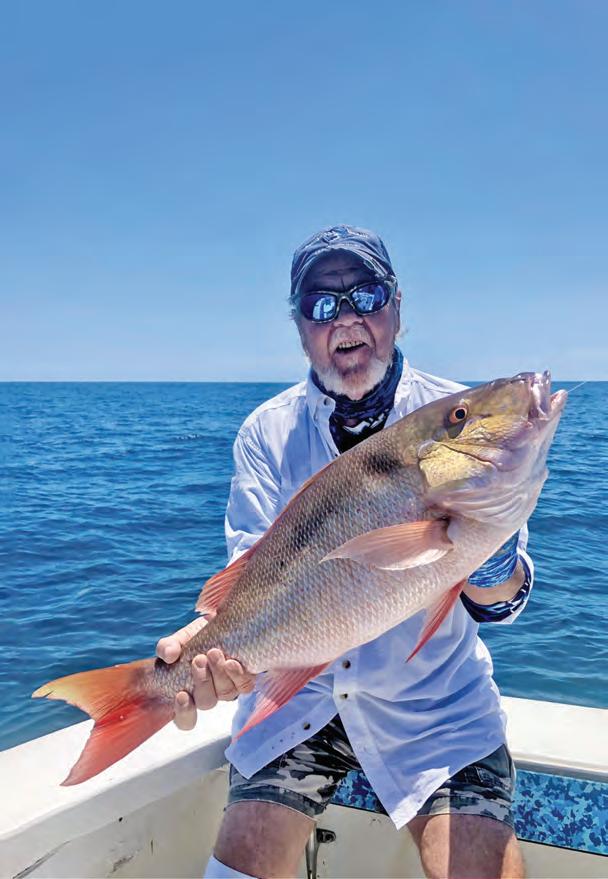

Capt. Nate Shellen
Shellen Guide Service
Okeechobee Bass Fishing Guides/Charters (863) 357-0892
sjmike7@aol.com
OkeechobeeBassFishing.com
Headwatersfishingguide.com
The current water level of Lake Okeechobee is 14.83 feet which is slightly higher than average. The lakes’ water levels tend to change quite a bit over the year. This can have an impact on fishing conditions in the area.
Places to check out include spots with plants like lilies, Kissimmee grass looking for schooling fish and grass beds; keep an eye out for openings in the greenery or, near patches on their own.
Techniques such, as using topwater lures like frogs and buzzbaits or poppers as well as speed worms and senkos have been

yielding outcomes lately— during the early morning or late afternoon hours when fishing is at its peak activity level. For fish that prefer waters beneath the surface level, try experimenting with jigs or opt for crankbaits and worms to maximize your chances of a catch. Using bait like shiners under a cork can also work well when fishing

for bass this time of year.
Some top locations to focus on catching bass this month are:
• Tin House cove on the outside grass edges and against the hard wall.
• The Kissimmee River provides a range of fishing options including fishing at the mouth for schooling fish and exploring the drop offs and ledges for large schools of fish.

• South Bay is famous for its plant life and abundance of bass fish that it can accommodate in quantities as well.
As the water cools this month the fishing will continue to get better and better and numbers of fish caught daily will increase as well. As always be safe out there and tight lines!

















Brian Nelli
Pushin’ Water Kayak Charters (772) 201-5899
Brian@tckayakfishing.com www.tckayakfishing.com
INSHORE: There should still be the tail end of the mullet run going on during October. Look for most of the bait to be pushed into the Intracoastal. Snook will have mostly started to move back into the rivers and Intracoastal as well. Try launching at Sawfish Park in Jupiter and head west up the rivers. Best baits will be live mullet and artificial lures that imitate a mullet.
Try D.O.A. Lures Bait Busters and Yo-Zuri Lures Top Knock to entice a bite.
OFFSHORE: Bottom fishing for mutton snapper and yellowtail snapper should remain good. Try using a leader in the 20-foot range tied to a Carolina rig or knocker
FROM THE SHORE
Chris Beachwalker Sharp
(772) 263-0118
beachwalkerfish@gmail.com
BEACH: October brings changes with the first cooler weather moving in. The mullet run should be coming to an end at the end of the month. Snook and tarpon will still be looking to fatten up for the winter. Bluefish, jacks and sharks will be taking over most catches along the beach. Spanish mackerel will also be thrown into the mix. Spoon lures will be your go to lure for the next few weeks. Look at cold fronts to really turn on the bite.
Snook fishing will be hot with finger mullet still being around. Nighttime or early morning being best time to go. Make sure to have a bridge net to land and release these fish unharmed. Tarpon will still be in the mix and look for bluefish and jacks to move in. Best bridge locations are

rig depending on your drift. Finger mullet will work well along with dead sardines or any other frozen bait you can get your hands on. This time of year, I like fishing the Jupiter area reefs in 50-90 feet. Sailfish, mahi and kingfish will be around and looking to eat mullet, goggle eyes and blue runners. If you looking to hit these pelagic fish look to slow troll the normal 90-200 foot of water.
either the Stuart causeway or Jensen causeway. Big drum near the bunkers will hold fish. Get those fiddler crabs out.
FLATS FISHING: Bait will be still easy to find, mullet being the top choice. Look to fish near the St. Lucie Power Plant on the east and west side of the river. Use topwater plugs at first light. In the Herman’s Bay area try popping cork and shrimp. Redfish will be up close to the mangroves. Snook will be in deeper holes. Jacks and lady fish will be everywhere.
Don’t forget to take a kid fishing!

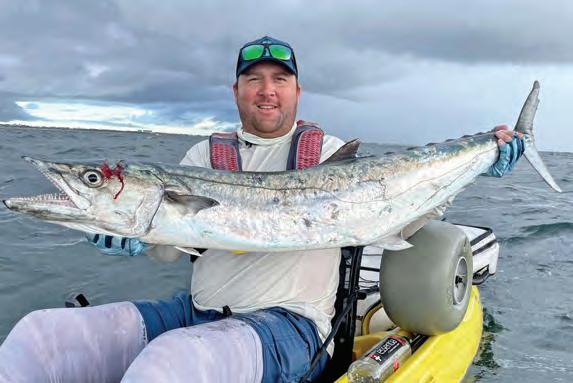
FRESHWATER: Peacock bass and clown knifefish will be chewing this month. Prop baits will work well for peacock along shallow edges. Try 20-pound leader and a 2/0 circle hook casting in and around structure and weed lines to get onto a few clowns with finger mullet and shiners. Look to fish mid-water column and below by adding a pinch weight to your leader and get that bait in their face.
Check out Pushin’ Water Kayak Charters on Facebook, Instagram, YouTube and TikTok for all the latest adventures my clients and I get into.





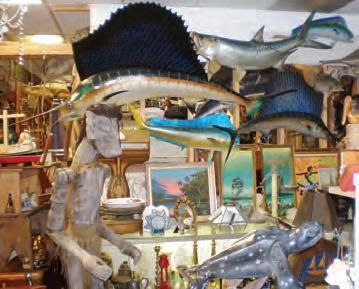
By Capt. Michael Mauri
MFAIR
GOOD
SOURCE:


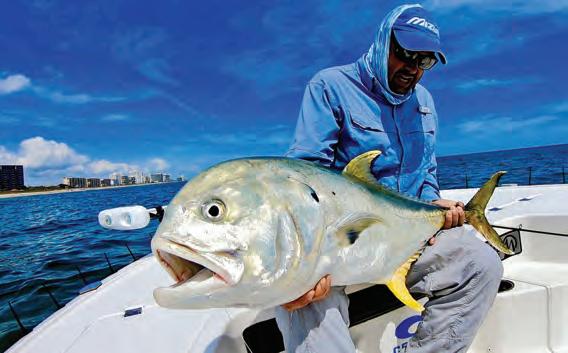




an, some days, the conditions are just downright nasty, but instead of throwing in the towel, I found myself sticking to sheltered canals and lee sides to keep the action going. Even when the weather is pushing most anglers off the water, there’s still a good chance to hook into snook, jacks, and tarpon if you know where to look. Fishing around docks, mangroves, seawalls, bridges, and any type of structure keeps things interesting, especially when the water’s clear, and you can see the fish making their moves. Here’s the deal, you want to get as close as possible—ideally bouncing it off walls or pilings. If you’re even a few inches off, your chances drop significantly. These fish are using the cover to ambush baitfish, so you’ve got to be in their zone to trigger a bite.
I generally stick to baitfish patterns in sizes 1/0 to 4/0, depending on the time of year,
with a preference for flies about the length of a finger. Always have a second rod ready with a big popper fly, too, because when those monster jacks show up, they’re there and gone in seconds. You’ve got to be quick, get that popper in the water, and make as much noise as possible to grab their attention. They hit like freight trains!
When it comes down to it, it’s all about working with what nature gives you and making the most of it. Honestly, it’s easy to get spoiled fishing here along the Treasure Coast, especially compared to guiding for Atlantic salmon in Norway (my wife is always talking about heading back!). But for now, let’s enjoy the fall season and keep our fingers crossed for a great mullet run!
Capt. Michael
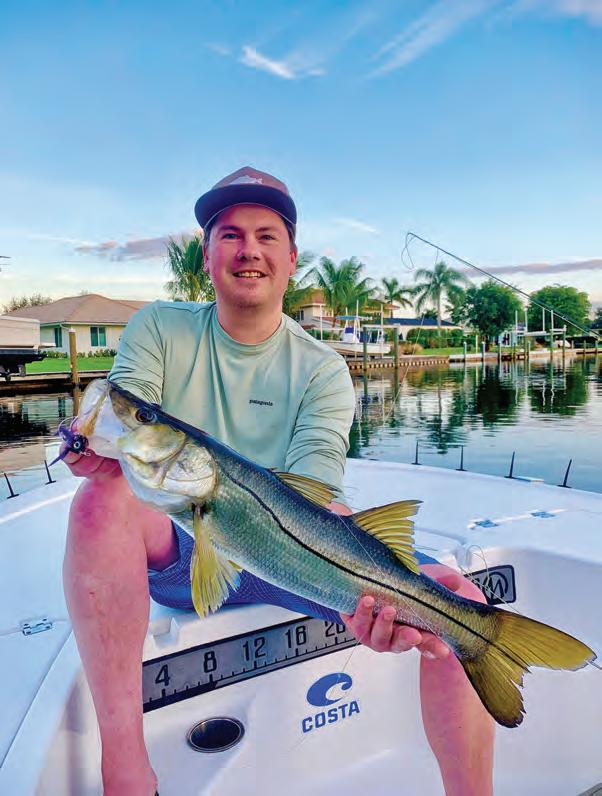
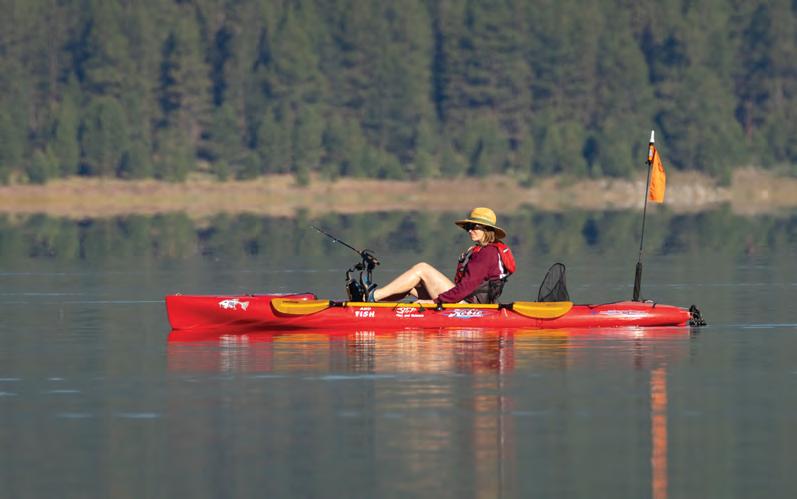
By
Long gone are the days of having a 35-pound sit inside (SI) kayak with nothing more than a fixed seat and a paddle. Today’s fishing kayak, the sit on top (SOT) is likely to have a bunch of moving parts as well as a whole slew of screws holding tracks, brackets and bungee tie downs. These kayaks are getting more and more complicated and may now have motor mounting brackets which believe it or not are vibrating the connection loose. I mention this as I’m seeing a lot
of on-the-water failures, and I think a lot of this may be due to the lack of simple maintenance.
Before your next outing take the time to retighten all the screws on the entire craft. Do not use a screw gun to tighten them as they can strip out easily. Hand tighten till snug and if you suspect water is bypassing the screws, back them completely out and add a little silicone to the hole. This will additionally help the screw from backing out in the future. Speaking of maintenance, especially if you’re kayaking in saltwater, make sure to hose your kayak down with freshwater. Take care to flush any bungees or nylon seats and mounting
brackets. Flush all the metal parts in particular. The drive systems in these new kayaks have a bunch of moving parts that are cable or chain driven and absolutely need tightening and care. If you spend a lot of time on the water, consider how many times you drive your paddles back. Also think about how hard you are driving the foot pedals and the wear and tear this is contributing to the cables. I carry spare drive and chain cables in my storage area, as I can sometimes be many miles from the launch and if my drive system fails it could be tough making it back to shore. Spend some time getting familiar with just how the drive cables and chains work so that you are prepared to work on them either in the water or on an unfamiliar shoreline. Tighten all the set screws as well as any hex bolts. Check for chain wear or individual cable strand separation.
If you have additionally added mounting brackets, ensure that they are also tightened. Don’t forget that the rails for these add-ons also get loose and need to be tightened often, especially camera boom tracks.
Now that you’ve spent some time tightening all those connections, I would recommend that you make up a small toolkit with various size nut drives, box wrench, Allen wrench (depending on whether they are standard or metric) and any Phillip tip screwdrivers. Keep these in an absolutely waterproof bag or box and if they get wet do not put them back in until they are totally dry.
With a little care familiarity and maintenance you can be confident that your next kayaking trip will be trouble free!
It’s a Wild World—Get Out There!














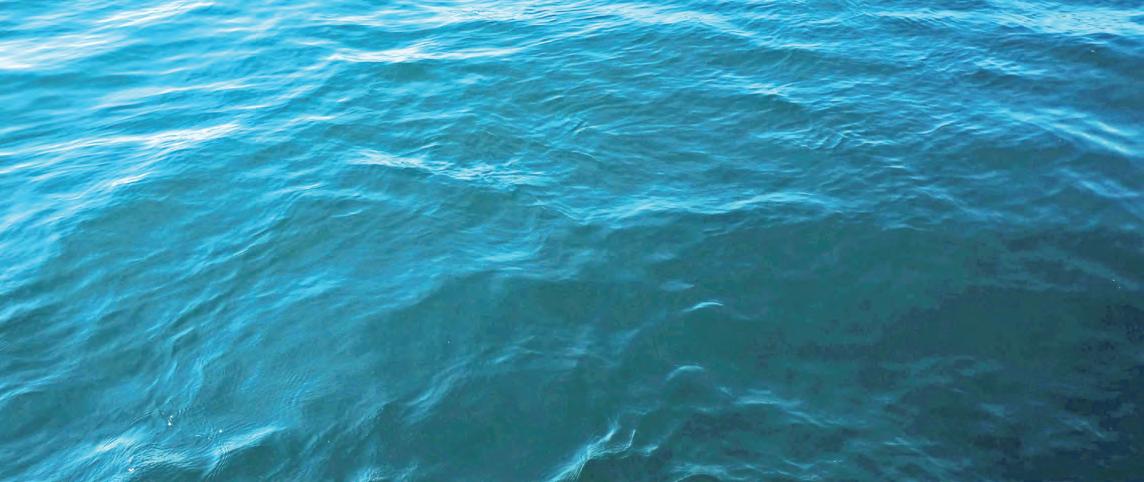

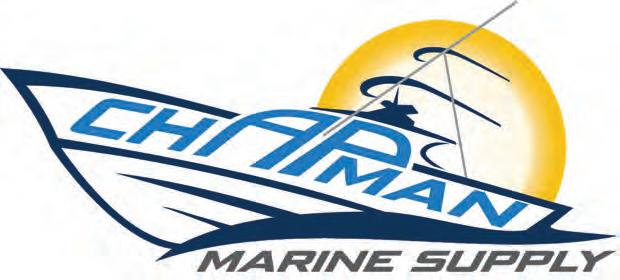


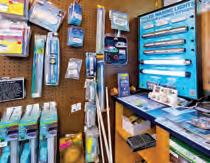
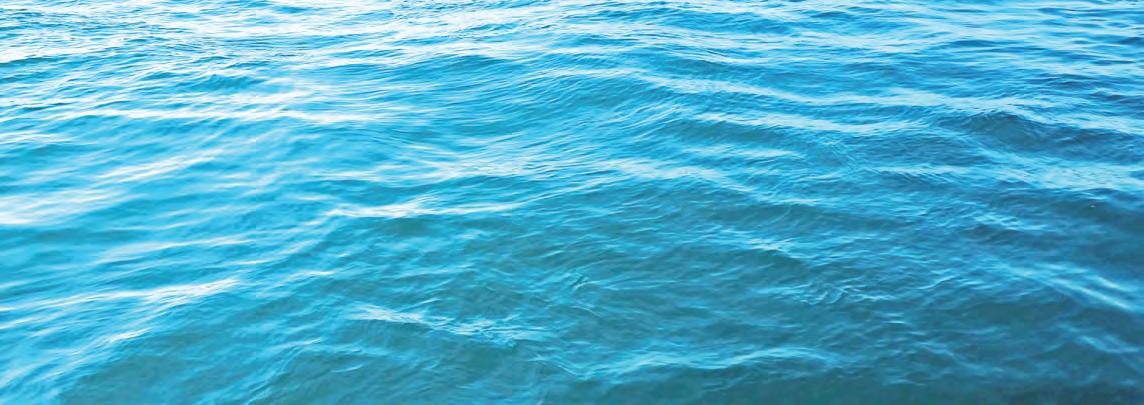

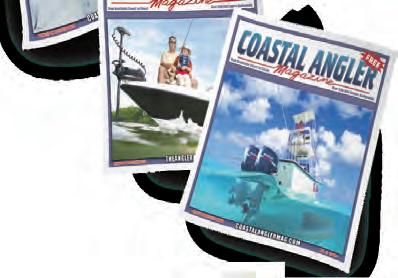










We don’t just reach anglers. Our readers enjoy all of the outdoors and a variety of recreational activities.
Reach an exclusive demographic: 90% male, 80% home owners, 35% college degree, $82K annual income.
Geo-Target your ad to reach: 10,000+ locally, 180,000+ throughout Florida, or over 280,000 nationally.
A FREE publication means new readers and “fresh eyes” each month that see your ad.
Local editorials from the area’s most experienced fishing guides, charter captains, and writers.
A rate schedule that offers the lowest cost per thousand impressions in the industry.
For the small business a regional or national ad can be a life-changing event.
Your ad will also appear in Coastal Angler Magazine’s E-magazine, marketing your business on the Internet.
We are the largest Free outdoor publication in the US, Puerto Rico and the US Virgin Islands with over 280,000 readers each month.
your
Magazine.

• 1 pound Florida snapper fillet, skin on and bones removed
• 1/2 cup Florida avocado, diced
• 2 teaspoons taco seasoning blend, divided
• 1 lime, juiced (plus more wedged for garnish)
• 1 cup sour cream
• Florida-made hot sauce, to taste
• 1 fresh Florida chili pepper, thinly sliced (if desired for heat)
• 2 tablespoons fresh cilantro (plus more for garnish)
• 1 head Florida romaine lettuce, shredded
• Olive oil for cooking
• 8 soft corn or flour street taco tortillas, toasted
• 1 cup fresh salsa
• Sea salt and fresh ground pepper, to taste

Preheat oven to 375 degrees. With a sharp knife, make some cross hatches in the skin of the snapper without cutting through the meat of the fish fillet; this will keep the snapper fillet from curling up during the cooking process. Season both sides of the snapper fillet with 1 teaspoon of the taco seasoning blend. Lightly cover a sheet pan with olive oil. Place the fillet skin side down on the oiled sheet pan. Add a few chili pepper slices to the top of the snapper fillet for extra heat if desired. Place the snapper in the preheated oven and cook for 5 to 8 minutes until thoroughly cooked in the thickest part. Remove from the oven and let cool. When the snapper fillet is cooled slightly, use two forks to flake the snapper into chunks.
While the snapper is cooking, add sour cream, avocado, the remaining 1 teaspoon taco seasoning, cilantro, a few more slices of chili pepper (if desired) and half the lime juice to a blender or food processor and blend until smooth. Taste the avocado crema sauce and adjust the seasoning with salt and pepper. Remove the avocado crema from the food processor and store in the refrigerator until ready to use.
Add the shredded romaine lettuce, remaining lime juice and a pinch of the taco seasoning blend to a small mixing bowl and stir lightly to coat. To assemble the tacos, place an even amount of the shredded lettuce on top of each toasted tortilla and top with the snapper. Add fresh salsa and avocado crema. Finally, garnish with lime wedges, Florida hot sauce and extra fresh cilantro if desired.
SOURCE: www.followfreshfromflorida.com

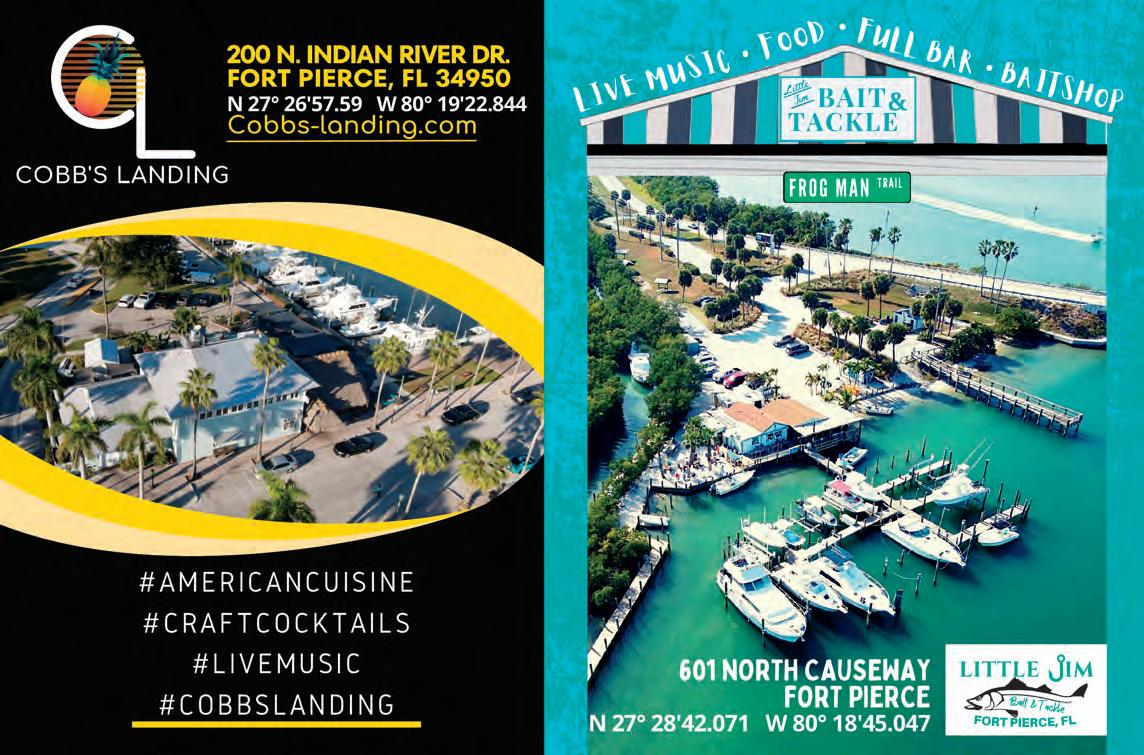



Visiting Stuart for the summer, Calum, 6, has continued his hot streak of landing beautiful fish in the local Twin River waters. This permit (5lb/16”) gave a wonderful fight to Calum on his new Penn 4500 combo-rig using shrimp. His G-paw was on hand (as ever) to land the beast.
Carl
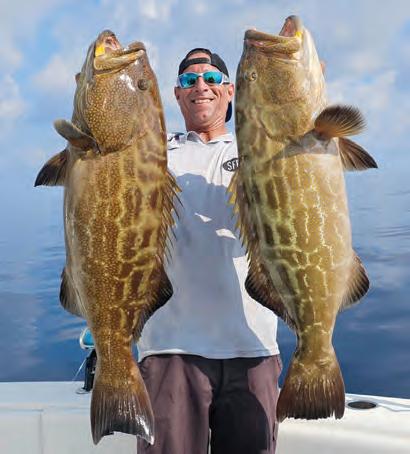

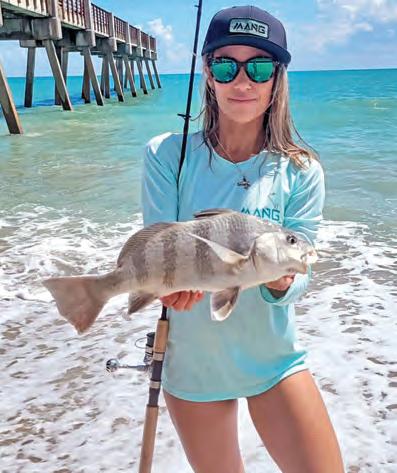





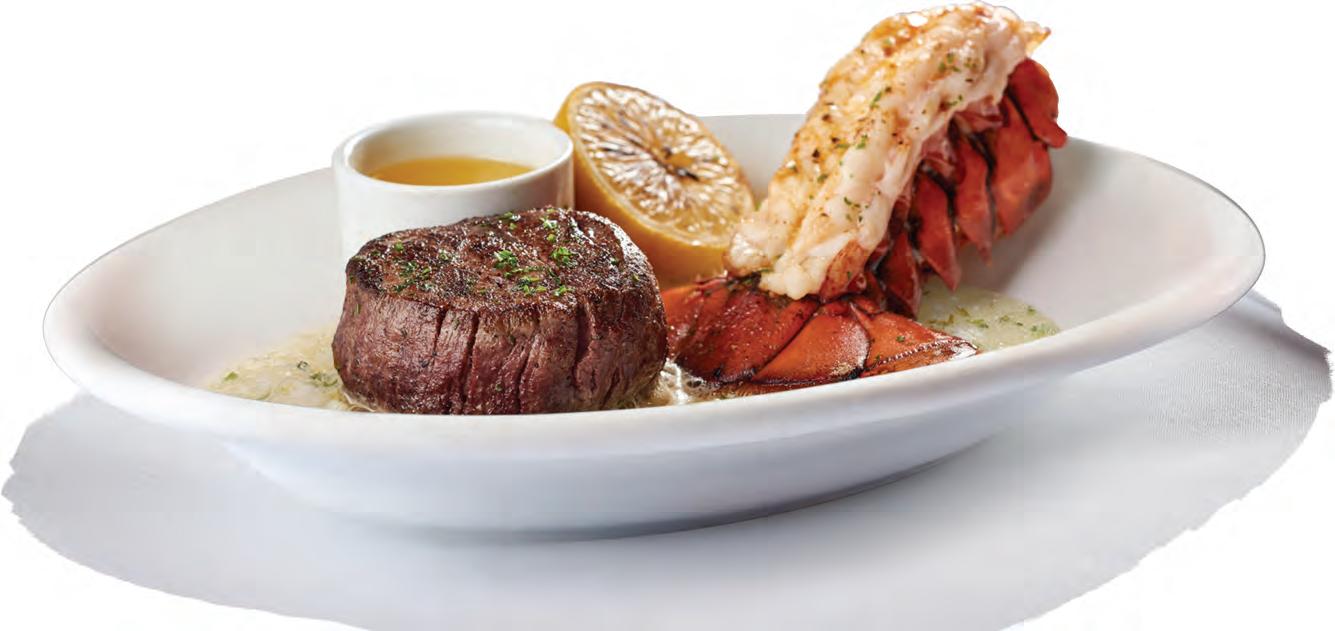
Make steak the catch of the day with a celebratory stop at Ruth's Chris. After a day on the water, join us for signature sizzle, hand-crafted cocktails and legendary hospitality.
PONTE VEDRA BEACH
814 A1A N., Suite 103 Ponte Vedra Beach, FL 32082 904-285-0014
JACKSONVILLE
1201 Riverplace Blvd. DoubleTree by Hilton Hotel, Jacksonville, FL 32207 904-396-6200
DESTIN
924-A-Senate Street, Destin, FL 32541 850-837-7884
ORLANDO 7501 W. Sand Lake Rd. Orlando, FL 32819 407-226-3900
WINTER PARK
480 N. Orlando Ave. Suite 100B Winter Park, FL 32789 407-622-2444
LAKE MARY
80 Colonial Center Pkwy. Lake Mary, FL 32746 407-804-8220
TAMPA
1700 N. Westshore Blvd. Tampa, FL 33607 813-282-1118
ST. PETERSBURG
131 2nd Ave. N. St. Petersburg, FL 33701 727-821-4139
SARASOTA
6700 S. Tamiami Trail Sarasota, FL 34231 941-924-9442
LAKEWOOD RANCH
6490 University Pkwy. Sarasota, FL 34240 941-315-6669
WEST PALM BEACH
651 Okeechobee Blvd. West Palm Beach, FL 33401 561-514-3544
BOCA RATON 225 NE Mizner Blvd. Suite 100
Boca Raton, FL 33432 561-392-6746
BONITA SPRINGS
23151 Village Shops Way Suite 101, Coconut Point Mall Bonita Springs, FL 33928 239-948-8888
FORT LAUDERDALE
2525 N. Federal Hwy Fort Lauderdale, FL 33305 954-565-2338
AVENTURA
2980 NE 207th St. Aventura, FL 33180 305-912-1266
CORAL GABLES
2320 Salzedo St. Coral Gables, FL 33134 305-461-8360
JUPITER
105 Breakwater Ct, Jupiter, FL 33477 561-831-4440

By Grayson Louis
The mullet run is a captivating natural event that draws anglers, wildlife enthusiasts, and photographers to the southeastern United States each fall. Tis annual migration of mullet, a resilient and abundant fsh species, plays a crucial role in the marine ecosystem and holds cultural and economic signifcance for coastal communities.
As temperatures begin to drop in September and October, millions of mullet—both striped mullet (Mugil cephalus) and white mullet (Mugil curema)—begin their southward migration along the Atlantic coast and the Gulf of Mexico. Tey are driven by an instinctual need to spawn in the warmer waters near the Florida Keys. Tis migration, which can last several weeks,
ofen features schools of mullet stretching for miles along the coastline.
Te mullet run is vital for the species’ survival, ensuring the continuation of their population. Mullet are prolifc breeders, releasing eggs in open water, which are fertilized and hatch into larvae. Tese larvae then drif with the currents back to estuaries, where they fnd a rich, sheltered environment to grow and mature before starting their own migration journeys.
For predators, the mullet run is a feast. Large schools of mullet attract a diverse array of marine life, including gamefsh like tarpon, snook, and redfsh, as well as apex predators like sharks. Birds of prey, such as ospreys and pelicans, also join in, diving into the schools to catch their fll. Tis abundance of food creates a feeding frenzy that is both a boon for wildlife and a breathtaking spectacle for observers.
Anglers eagerly anticipate the mullet run, as it ofers a unique opportunity to catch trophy-sized fsh that are otherwise elusive. Many anglers plan their entire year around this event, knowing that the presence of so many mullet will increase their chances of hooking a prized tarpon or snook. Te mullet run also supports local economies, as the infux of tourists and fshing enthusiasts boosts business for bait shops, boat rentals, and coastal restaurants.
Beyond its ecological and economic importance, the mullet run holds cultural signifcance in the regions it touches. Coastal communities have long celebrated the mullet run with festivals, fshing tournaments, and other events that bring people together to appreciate the sea’s bounty. Tese traditions underscore the deep connection between humans and the marine environment, highlighting the importance of conservation eforts to protect this natural treasure for future generations.
Despite their resilience, mullet populations face threats from habitat loss, and pollution. Conservation measures, such as fshing regulations and the protection of estuarine habitats, are essential to ensuring the continued success of the mullet run. By preserving the conditions that allow this migration to thrive, we safeguard a vital food source for many species and maintain a cultural and economic asset for coastal communities.
Te mullet run is more than just a migration; it is a reminder of the intricate and interconnected web of life in our oceans. As we marvel at the sight of countless fsh moving as one, we are also called to recognize our role in preserving the delicate balance of the marine ecosystem





















To support their mission to restore and protect Florida's waters, Captains For Clean Water (CFCW) is rafing of a one-of-a-kind boat custom crafed by Hell's Bay Boatworks, along with a literal boatload of gear from partner brands Orvis, YETI and Costa Del Mar.
Tis year's skif is a Hell's Bay Professional 17.8, the ultimate shallow water technical poling skif specifcally designed for the pursuit of fsh in the most challenging shallow water conditions. Carefully engineered for poling the fats with stealth, this skif is outftted with a Mercury 60R Motor, T-H Marine Atlas hydraulic Jack Plate Micro Jacker, custom SeaDek foor kit, Ram-Lin aluminum trailer, Simrad NSS9 evo3S multifunction display, a Power Pole 6f. Pro Series and a Stify Guide Series - Graphite 22’ Push Pole.

But what really makes this boat unique are the special touches done in collaboration with Orvis. Sporting a multi-tone grey color combination and custom cork SeaDek foor kit, this boat's look and feel was inspired by the Orvis Helios line of fy rods—of which there are four included with the package.
Captains For Clean Water is a Florida-based 501(c)3 grassroots nonproft on a mission to restore and protect aquatic ecosystems for the use



and enjoyment of all. Founded in 2016 by fshing guides, CFCW has united the outdoor industry, business community, and concerned citizens at the forefront of the fght for clean water—the lifeblood of Florida’s economy and $85.9 billion tourism industry.
"In 2016, we started as a couple of fshing guides who were fed up with Florida’s poor water management practices—the toxic discharges from Lake Okeechobee that were poisoning the coasts, starving the Everglades, and devastating the estuaries our livelihoods depended on. And we were

convinced that if everyone just knew about these issues, they would’ve been fxed long ago. Te solution was known through a plan called Everglades Restoration, but progress had been delayed for decades due to lack of political will and public awareness,” said Capt. Daniel Andrews, Captains For Clean Water’s Co-Founder and Executive Director. “We never set out to start an organization, but as we peeled back the layers, we realized we were neck-deep in a ‘David-versus-Goliath’ fght to save our waters. We’ve kept our roots within the guide community and efectively engaged concerned citizens, business communities, outdoor brands, and anglers across the country. As a result, progress is happening at a record pace as more people than ever get involved in the fght for clean water, but we still have a long way to go and we need your help." Supporters can purchase tickets for a chance to win now through December 31, 2024. Every ticket purchase supports CFCW’s mission to protect and restore Florida’s water resources for the use and enjoyment of all. A winner will be drawn at random on January 12, 2025 at Backyard Social in Fort Myers.
To purchase rafe tickets and to learn more, visit captainsforcleanwater.org
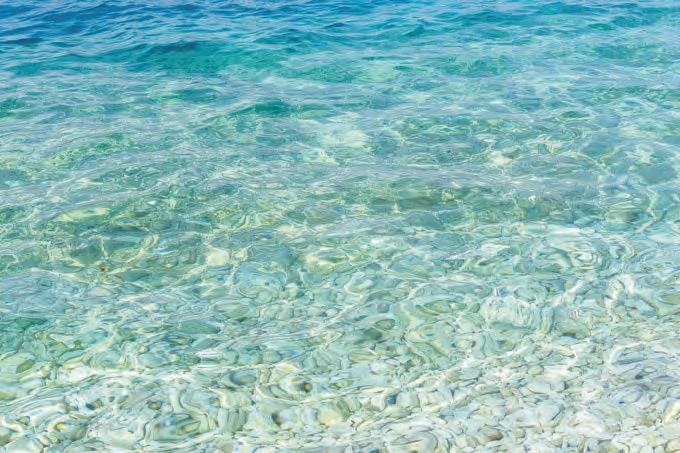



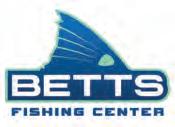


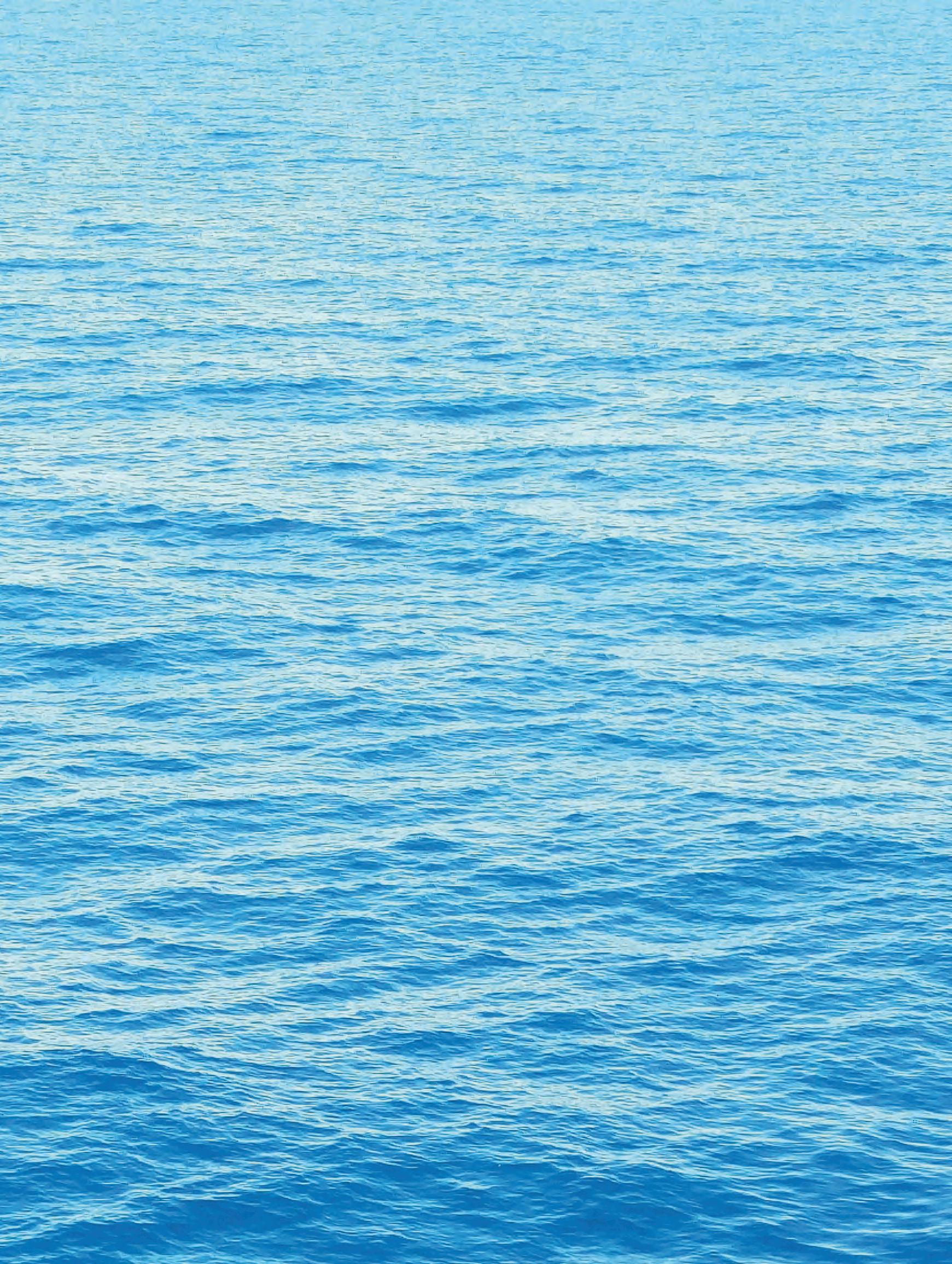



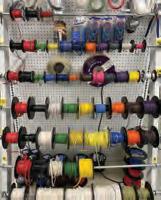







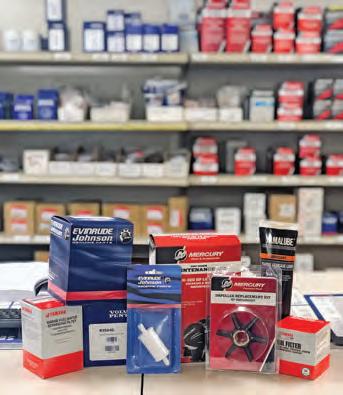








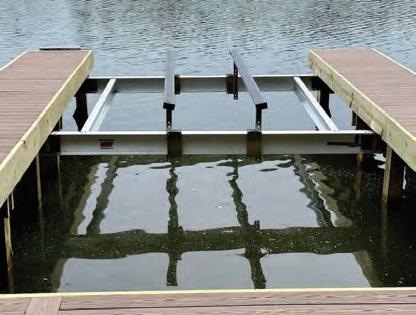

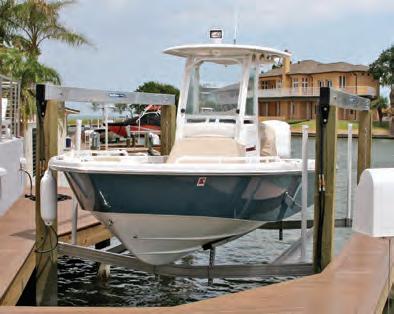


ShoreStation hydraulic boat lifts are a reliable choice for coastal residents and boating enthusiasts alike. Their strong construction, made with corrosion-resistant materials, allows them to withstand harsh environmental conditions, including sun, storms, and saltwater damage. ShoreStation provides a steadfast solution for protecting waterfront investments, ofering peace of mind to owners in the Sunshine State.
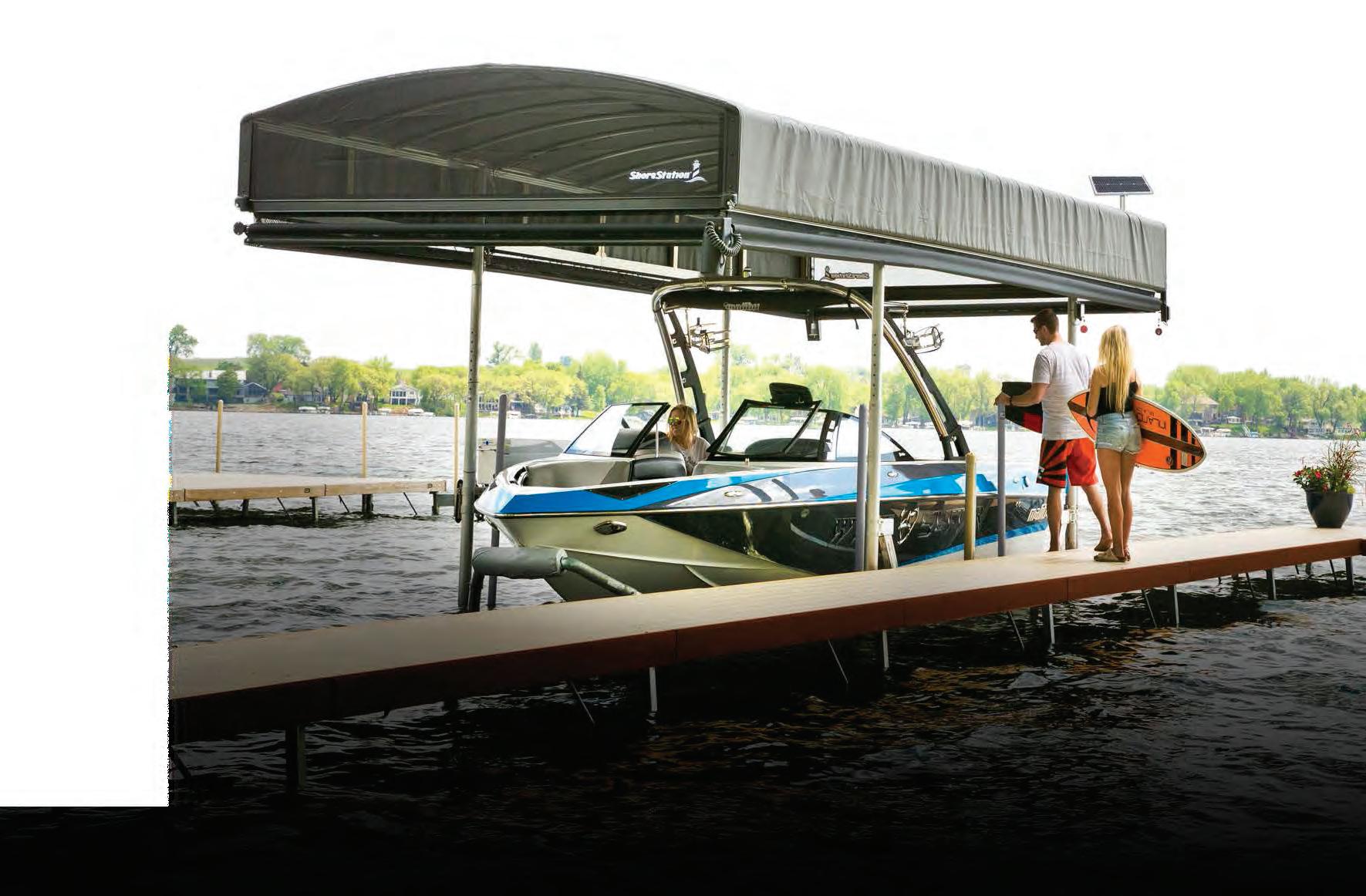




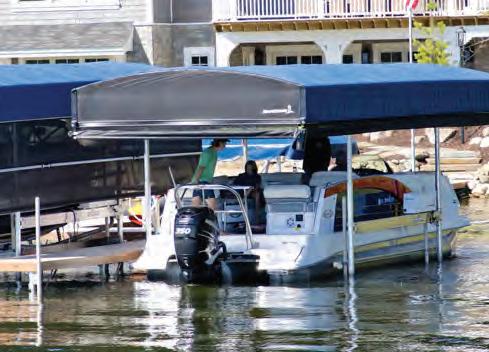

Equipped with exceptional weather resistant fabric and breathable SunTex 80 woven mesh ends for maximum protection and durability,

Made from the highest quality materials, our innovative hydraulic boat lift is one of the fastest and safest lifts on the market today. When you have a hydraulic lift, there’s no need to worry about wind and waves getting in your way. This lift will give you confdence to safely land and secure your boat in less-than-ideal conditions.
Never miss another moment on the water. Power your lift with clean, free solar power. Our speedy 20 watt charger features solar regulator drainage protection, saving your battery from permanent damage caused by overcharging.




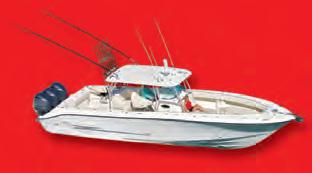






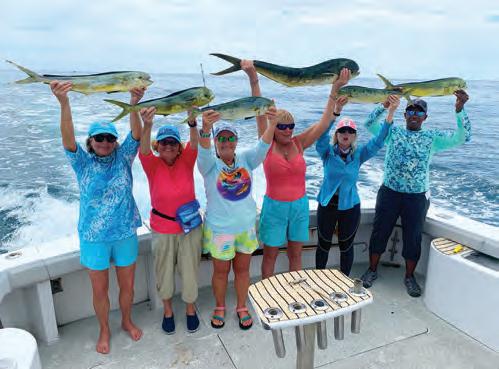




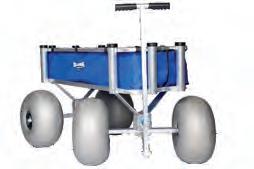



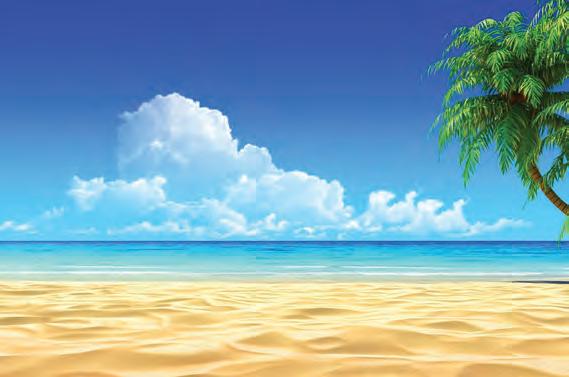





Fall fshing ofers anglers a perfect blend of cooler weather, stunning scenery, and active fsh. As summer fades, the changing conditions in freshwater and saltwater environments create ideal opportunities to catch a variety of species. Whether in lakes, rivers, or coastal waters, autumn provides some of the most rewarding experiences for fshing enthusiasts.
One reason fall is excellent for fshing is the behavior of fsh during this season. As water temperatures drop, fsh become more active, feeding aggressively to prepare for winter. In freshwater, species like bass, trout, and walleye move into shallower waters, making them easier to target. Bass, in particular, hunt more during the fall, feeding on schools of baitfsh in cooler, oxygen-rich waters.
Largemouth and smallmouth bass gravitate toward areas with abundant food sources. Anglers ofen succeed using lures that mimic baitfsh like shad and minnows. Crankbaits, jerkbaits, and sof plastics, especially in natural prey colors, are popular choices. Fishing near structures like submerged logs, rock piles, and weed beds can increase your chances of landing a big one, as bass ofen use these areas as ambush points.
Trout fshing also peaks in the fall, with cooler water temperatures bringing these fsh into more accessible parts of rivers and streams. Fly fshing is particularly efective during this time, as trout are more likely to strike at dry fies and nymphs resembling the insects they feed on. In many regions, fall is also the time for spawning runs, particularly for salmon and steelhead, ofering anglers a chance to catch them in large numbers amid stunning autumn scenery.
In saltwater, fall is synonymous with the migration of popular species like striped bass, bluefsh, and redfsh. As these fsh move along coastlines, following baitfsh like mullet and menhaden, they ofer exciting opportunities for surf and boat fshing. Te fall mullet run is a
I’ve spoken with and interviewed many anglers during my career as an outdoor writer. One of my favorite questions is, “Do you remember the frst fsh that you caught?” It’s amazing to me how many anglers do in fact remember the very frst fsh that they ever caught. Most recall every element involved in that frst catch. All seem to instinctively smile when recounting the event. It’s a fond memory, one that glistens each time it’s retold.
Tis right of passage can occur at any age. For me I was four years old standing beside a small pond with a cane pole, red and white bobber and baited hook in the water, with my dad kneeling beside me. I remember that it was a sunny day and that we were both smiling.
As the bobber went under my dad said, “Catch him, Son!” and I instinctively raised the cane pole to bring the brim to my dad’s reach. We put the fsh in a metal bucket full of water and I stared at it and observed it the entire ride home. I remember how proud my dad was as he shared the story of my catch with the rest of our family, and thus began a lifetime of catches and smiles and fond memories and a sense of pride and accomplishment. A lifetime of those wonderful elements thanks to my dad.
Teach a kid to fsh. Tey’ll likely never forget you, and you’ll likely change their life for the better.
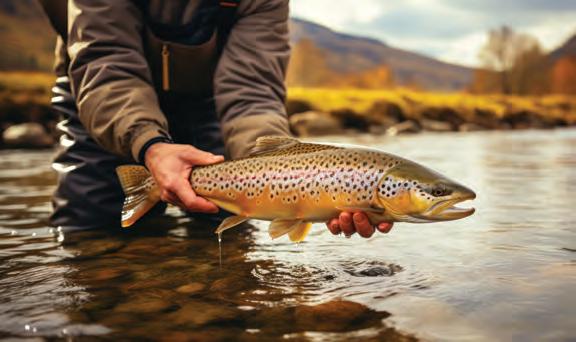
highlight for many saltwater anglers, drawing large predatory fsh close to shore where they can be targeted from the beach or pier.
For those targeting striped bass, the cooler fall waters bring these fsh into the shallows, making them more accessible to surfcasters and inshore anglers. Live bait like eels or bunker is ofen the go-to choice, but lures like topwater plugs, sof plastics, and bucktails can also be efective. Te sight of a striper smashing a surface lure in the crisp autumn air is an experience that keeps many anglers coming back year afer year.
Another advantage of fall fshing is the relative solitude. With many focused on hunting or other seasonal activities, fshing spots are less crowded than during the summer. Tis allows for a more peaceful experience, where you can fully immerse yourself in nature. Te vibrant fall foliage, combined with the quieter atmosphere, creates a perfect backdrop for a day of fshing.
Overall, fall fshing ofers something for every angler. Whether chasing bass in a quiet lake, casting for trout in a mountain stream, or battling gamefsh along the coast, fall provides unparalleled opportunities to connect with nature and enjoy the thrill of the catch.
By John Mosley
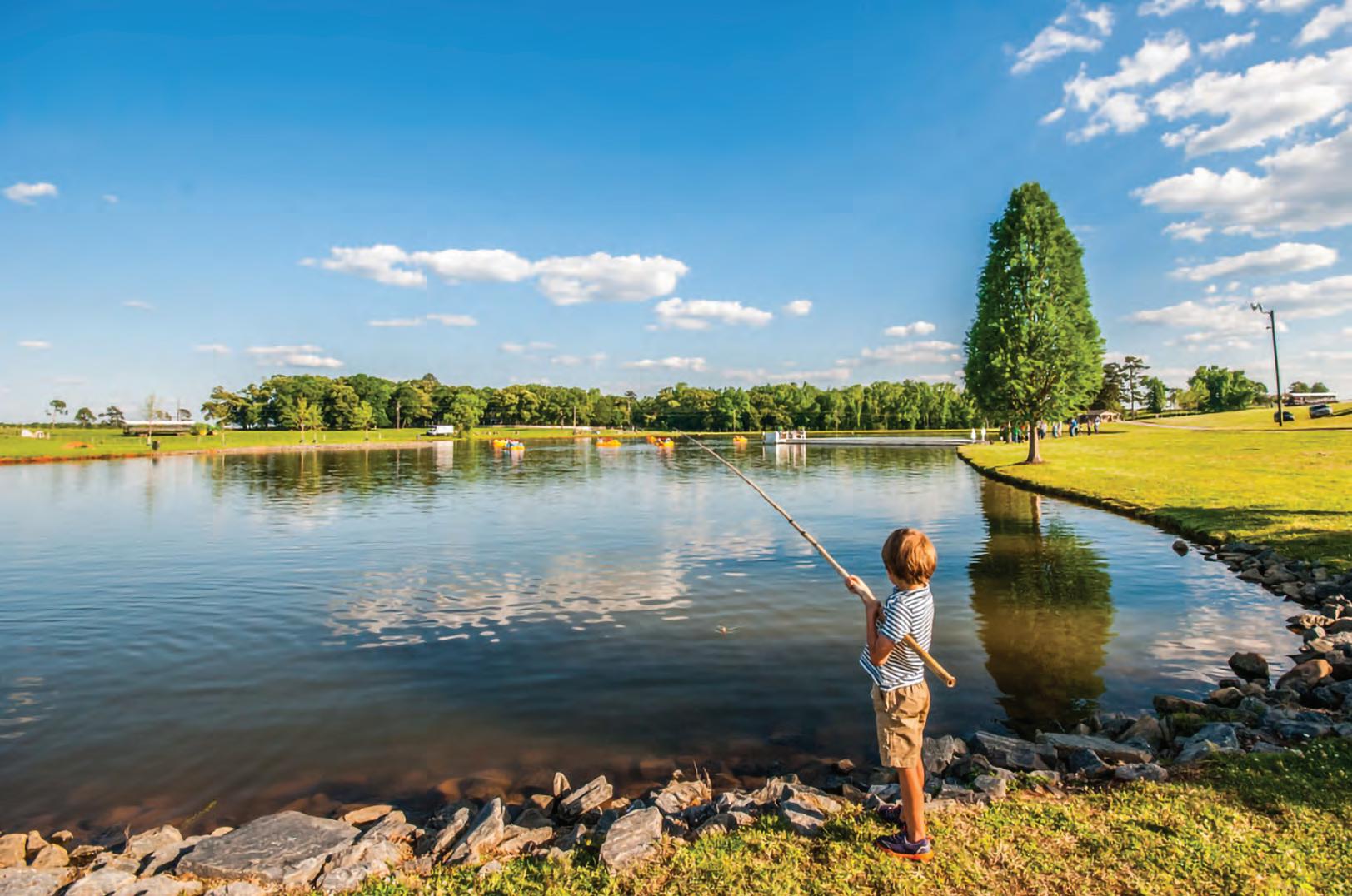

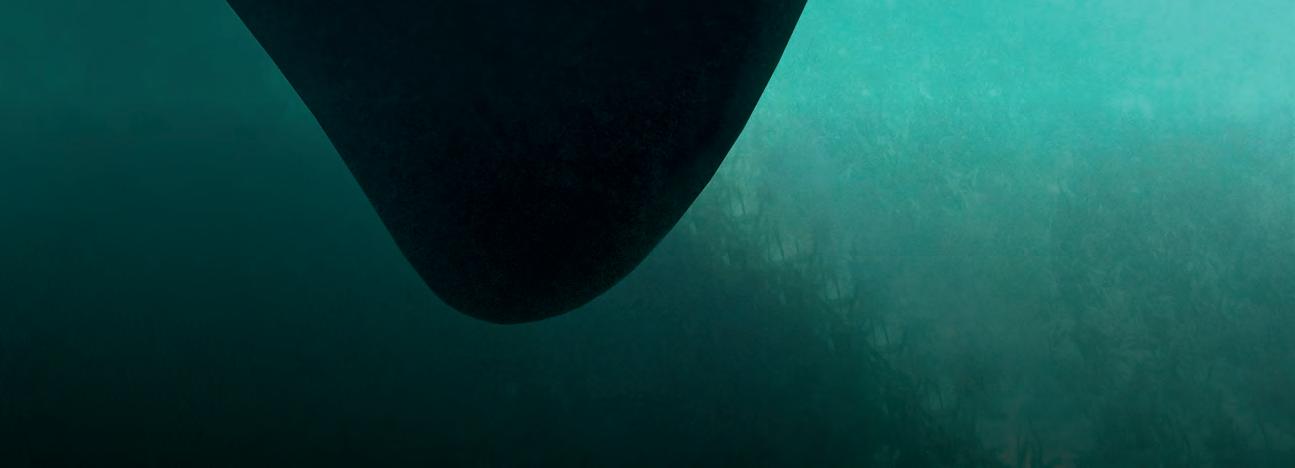


Relentless performance for every yacht, everywhere, every time. It is so much more than just bottom paint.




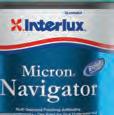



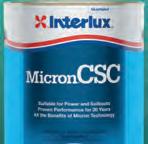



Interlux’s range of fouling control products not only improves your performance by protecting your hull from fouling, they also protect against the spread of invasive species, safeguarding your local waters when exploring new regions, therefore helping you make a difference by looking after the waters that have provided you with enjoyment and freedom for so many years.
Like you, we have a passion for boating. We provide boaters the hull protection they deserve with over 140 years of cutting-edge science, technology and expertise. You can expect only the best from every Interlux yacht paint product, providing you the confidence to explore your world.
Early morning fog and dropping water temperatures are a sure sign fall is near.

Yes, it’s that time of year when the big sheepshead and cool water redfsh invade the local deep-water docks and structures. Both species are tough opponents, challenging even the most skilled anglers.
Sheepshead are most likely to be found around docks where subsurface pilings are covered in marine growth like oysters and limpets, and where tiny crabs live inside. Extreme submerged structures such as rock outcrops or limestone ledges are good too.
Tis time of year, seek the larger redfsh around deep water docks where white bait and pinfsh congregate for protection, becoming a plentiful quarry. Both reds and sheepsheads like to use the current that brings food naturally in their direction, possibly using the pilings as an ambush point from which to launch their attack. Look in the proximity of extended dock systems and/or rough shoreline structure; lots of the bigger fsh are caught here.
Tiny crabs or sand feas will produce great sheepshead action. Live shrimp cut in half are my next “go to” bait. Seek docks with at least eight feet of water (10’ to 14’ is ideal). Cast to the base of the pilings. Ten tighten the line to feel the bite.
Small freelined pinfsh or live whitebait are great for reds as the water cools thru early October.
My neighbor Jerry claims, “Redfsh hate pinfsh. Tat’s why they are such good bait.”

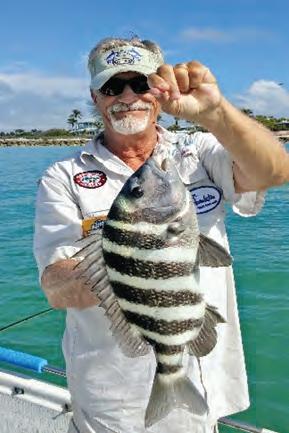

By CAM Staf
Anglers have long observed that fsh activity is infuenced by the lunar cycle, giving rise to what are now known as lunar tables. Tese tables serve as invaluable tools for predicting when fsh are most likely to be active and feeding. But how do lunar phases afect fshing, and how can anglers use lunar tables to their advantage?
A lunar table provides information on the moon’s phase and its position relative to the Earth and the sun. Tese factors signifcantly afect tides, which in turn infuence fsh behavior, especially in coastal and tidal waters. Te moon’s gravitational pull creates tides, and as the water moves, it stirs up nutrients and prey, encouraging fsh to feed.
Beyond tides, fsh have a circadian rhythm that governs their daily activities, including eating and resting. Many species, especially saltwater
“Really?” I said, “Reds hate pinfsh?”
“Yeah”, he said, “Pinfsh eat the redfsh eggs and the reds hate them.”
Now that’s some good information right there! I laughed and replied, “I did not know that!”
Oh well, to each his own.
OK, Jerry, if you say so.
I guess I’ll have to believe him because they do work well.
Cut ladyfsh tightlined on the bottom is always good.
Cooling fall waters are great for many species which include pompano, mackerel, sheepsheads, trout and reds. Find some good structure or a vacant dock and give it a go.
I wish for you a most enjoyable and productive day on the water while in pursuit of your fall quarry.
Capt. Russ Walker is a USCG Masters licensed fshing guide and owner of Tide Walker Charters out of Cape Coral, FL. www.tidewalkercharters.com.
fsh, also follow a lunar rhythm directly infuenced by the moon’s phases. Fish tend to be most active during the new moon and full moon phases, when tidal movements are more pronounced and feeding conditions improve.
1. New Moon: During the new moon, when the moon is between the Earth and the sun, strong “spring tides” occur due to the combined gravitational forces of the sun and moon. Tese heightened tides trigger more active feeding, particularly inshore and near tidal fats.
2. Full Moon: Like the new moon, the full moon also causes strong spring tides. Fish, especially predators, are more active at night during this phase, taking advantage of the increased light for hunting.
3. First and Last Quarter: Tese phases generate weaker “neap tides,” with less pronounced tidal changes. Fishing can still be productive, but fsh activity is generally reduced compared to the new and full moon phases.
Lunar or solunar tables break down the moon’s infuence into specifc time slots for optimal fshing, categorizing them into “major” and “minor” feeding periods. Major periods occur when the moon is directly overhead or underfoot, while minor periods happen when the moon is on the horizon. Major periods generally result in higher fsh activity, although both are useful for timing fshing trips.
Most lunar tables are simple to read, ofen color-coded for clarity. High fsh activity times may be highlighted in green or red, while less favorable periods might appear in blue or gray. By planning your fshing trips around these prime times, you can increase your chances of success.
However, lunar tables are just one factor among many. Weather, water temperature, and the habits of specifc fsh species also play crucial roles. For instance, overcast conditions during a full moon can reduce visibility, hindering feeding, while high winds or changing barometric pressure may alter fsh behavior.
Lunar tables are a valuable tool for anglers seeking to maximize their success. Understanding the moon’s phases and their efect on fsh behavior, especially during new and full moon phases, can help you plan fshing trips during peak activity periods. Although they don’t guarantee a catch, combining lunar tables with local knowledge and weather conditions can signifcantly enhance your chances of a productive day on the water.
Introducing kids to the sport of hunting through squirrel hunting can be an excellent way to nurture a lifelong appreciation for nature and outdoor skills. Squirrel hunting ofers a relatively safe, manageable, and rewarding experience for young hunters. Tese small game animals are abundant and found in many habitats, providing ample opportunities for success, which is crucial for keeping kids engaged.
Squirrel hunting teaches essential hunting skills such as patience, observation, and marksmanship. Because squirrels are agile and quick, young hunters learn to move quietly and hone their ability to spot subtle movements in the trees. Tese skills are foundational for all types of hunting, making squirrel hunting a great starting point.
Moreover, squirrel hunting emphasizes safety and ethics, as kids learn to handle frearms responsibly, understand hunting laws, and respect wildlife. Parents and mentors can use this experience to instill values like conservation, teaching kids about sustainable practices and the importance of preserving natural habitats.
Te physical demands of squirrel hunting are also suited for young hunters. It typically involves moderate walking and the excitement of a successful hunt is an excellent way to build a child’s
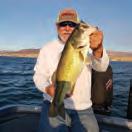

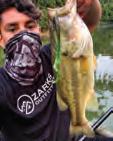
confidence and interest in the outdoors.
By Benjamin Babcock
Overall, squirrel hunting is not only a gateway to the broader world of hunting but also a meaningful way to bond with children and introduce them to the principles of responsible, ethical, and sustainable hunting practices.
Te .410 over-under shotgun is an excellent choice for a child’s frst frearm, ofering a combination of safety, versatility, and ease of use that makes it ideal for young or novice shooters. Tis type of shotgun typically has two barrels stacked one on top of the other, which gives it a balanced feel and allows for quick target acquisition, making it easier for kids to handle and shoot accurately.
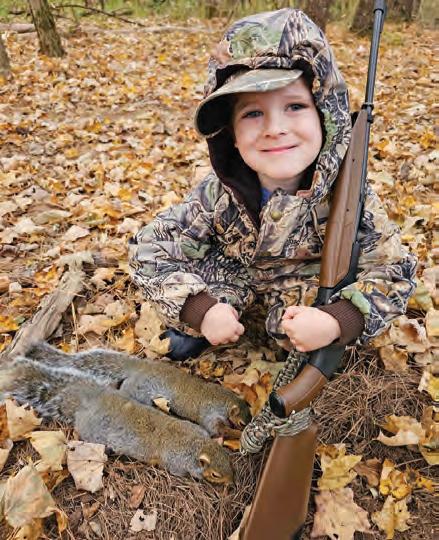
One of the main advantages of a .410 shotgun is its low recoil. Te .410 is known for being a “light” shotgun, meaning it doesn’t have the heavy kick associated with larger gauges. Tis is particularly important for young shooters, as it allows them to focus on learning proper shooting techniques without the fear of painful recoil, which can discourage continued practice.

Te over-under design also emphasizes safety. With its simple break-action mechanism, it’s easy
carried safely in the open position when not in use. Additionally, the .410’s limited range and pellet spread make it a good learning tool, encouraging kids to develop accuracy and precision.
Te versatility of the .410 makes it suitable for various types of hunting, from small game like squirrels and rabbits to clay target shooting. As a child’s skills and confdence grow, the .410 over-under shotgun can serve as a reliable and consistent companion, helping them build a strong foundation in shooting sports. Overall, it’s an excellent starter gun that balances ease of use with the challenge necessary to develop profciency.
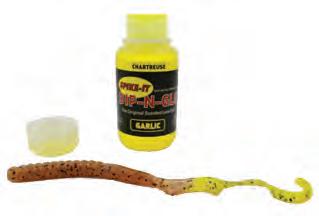


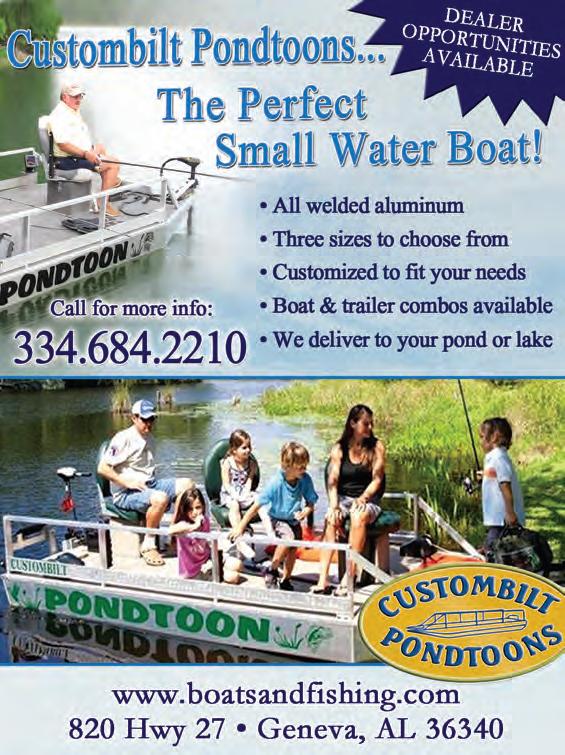
By Capt. Quinlyn Haddon

Throughout the month of October, the fishery in The Florida Keys will begin its autumn transition. This midway point between the drastic change of summer and winter fishing, can be unpredictable to forecast, but also provides exciting surprises during this overlap.
With cooler waters driving fish nearer to shore, reef and backcountry fishing will become more and more productive as we push into our winter fishery. The bait fish that particularly favor our shallower waters as the temperatures drop, will bring with them some of our favorite winter predators. Depending on the timeline of this seasonal change, we may begin to experience the return of sailfish and wahoo near our reef.
The anticipated temperature change of the water not only drives fish closer to shore, but is also a massive trigger for southbound migration. This is especially true for one of the ocean’s most notable vagrant; the swordfish. Fully understanding the habits of a fish that can migrate hundreds of feet up and down the water column each day, and thousands of miles each year,
can be a challenging endeavor. However, the data that has been collected on swordfish to date, has proven to be reasonably consistent.
The majority of mature swordfish, and particularly large breeding females, have been observed to spawn predominantly in the spring and summer. They favor warm waters with heavy currents for this process, which takes them as far south as the Caribbean sea. After abandoning their millions of eggs to the currents, they will begin an incredible migration in search of feeding grounds to sustain them repeating the process all over again.
Traveling thousands of miles up the coast, as far as Newfoundland, Canada, they seemingly utilize the continental shelf has a highway.
After gorging in these northern waters throughout the summer and early autumn, they then begin their return migration through our section of the swordfish highway, opportunistically feeding along the way.
While every month in the Florida Keys provides excellent opportunity to catch swordfish, this month gives us an extra bump on prevalence of larger swordfish migrating through our waters. The same is true for November as well, but with more chances of tackling windier days, October offers a more reliable forecast.
Catching swordfish is a great way to fill the box with a significant amount of quality meat. The yield of a single fish is more than enough to fill both your refrigerator, and when properly sealed, your freezer too. The unique flavor and texture of swordsteaks is sought after on its own, but there is always a chance that your catch is concealing an upgrade. In very rare instances, a swordfish’s meat will appear orange in color as opposed to the standard white. The quality of this meat is unparalleled, and is caused by the fish’s penchant for munching on shrimp. These special upgraded fish are referred to as pumpkin swordfish. How perfectly festive it would be to carve one of these this month.
The Florida Keys not only boasts an excellent fishery for swordfish, but can also get you there in about a 30 mile run offshore. This gives you a chance at a fish at a lifetime in half the time and cost of a west-coast grouper trip.
If this fish is on your bucket list, October in the Florida Keys presents a great opportunity to add that checkmark.
Capt. Quinlyn Haddon guides with Sweet E’nuf Charters out of Marathon, Florida Keys. Contact her at (504) 920-6342 or Captainquinlyn.com. Find her on social @captainquinlyn.







If your device has an LCD that has faded over time, or want to inquire about possible repair options for your unit, give us a call or visit our website!












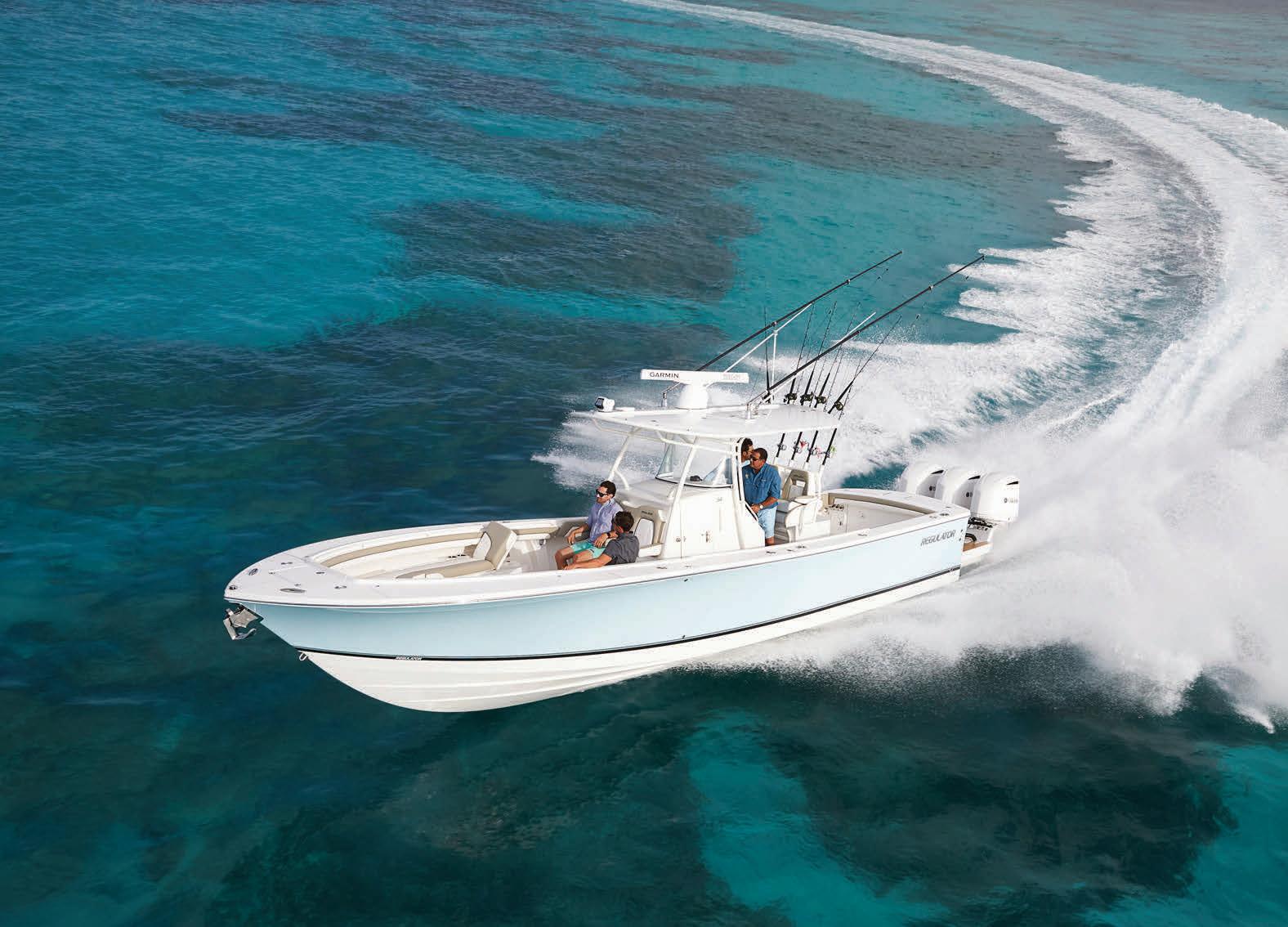



Boat Fix, a recreational boating telematics company that provides a combination of real time remote monitoring, GPS tracking, sophisticated geofencing, and 24/7 live customer support, announced today its Admiral Club Member sponsorship of the National Safe Boating Council (NSBC).
“At Boat Fix, safety is in our DNA and our goal is to promote safe, secure, and stress-free boating,” said Steve Pitsos, CEO, Boat Fix. “To support the NSBC at this level aligns with this vision. We are excited to be a part of the organization and thrilled to help them in their mission of advocating for a safer boating culture.”

“We are very grateful for the support of companies like Boat Fix,” said Peg Phillips, Executive Director, National Safe Boating Council. “Promoting safe boating takes constant education and outreach to the boating community. Only through the support of like-minded companies can we accomplish this vital mission.”
Boat Fix is more than a feet management and monitoring solution. As a tool for safer boating and boat ownership, the Boat Fix app sends real
time weather alerts and small craf advisories including wave height, visibility, and wind speeds based on the boat’s location; ofers geofence protection; safety checklists of U.S. Coast Guard required equipment including calendar reminders with fre extinguishers and fare expiration dates and helps ensure that the correct number of life jackets are on board to be worn; pre- and postdeparture checklists to help verify all systems are functioning properly; as well as remote


monitoring of battery voltage – including ultra-low, low- and high-voltage which is critical for preventing degradation of battery life and avoiding potential fres or explosions. In addition, the Boat Fix app provides advanced navigation with NOAA charts with detailed navigation marks and depths, rather than industrystandard Google Earth maps.
Users of the Boat Fix Pro app can communicate with the 24/7 Boat Fix team at the touch of a button, through voice, text, email, or two-way video chat to answer questions and diagnose issues on the water. Every call is answered in seconds, in person, by trained professionals ready and willing to help. Te industry-exclusive 24/7 Emergency Mechanical Helpline ensures boaters have immediate mechanical assistance over the phone if issues occur on the water. Te 24/7 Boat Fix Control Center also monitors unauthorized use and boat-thef prevention and can share your boat’s exact location with law enforcement.
Founded in 1958, the National Safe Boating Council serves as a national catalyst for developing a safe boating culture by providing educational resources, outreach programming, and training opportunities for industry partners and the boating community to infuence fun, safe, and responsible boating.
By Tracy Patterson

In the last decade, fshing has seen a signifcant transformation with the rise of female anglers. Once a male-dominated activity, more women are now not only participating but also excelling, reshaping the fshing community and breaking down stereotypes.
According to the Recreational Boating & Fishing Foundation (RBFF), the number of female anglers in the U.S. has increased by nearly 20% over the past ten years. In 2020, around 17 million women fshed, making up nearly 40% of all anglers. Tis shif refects broader changes in societal attitudes toward women in traditionally male-dominated activities.
Female anglers are challenging long-standing stereotypes. Fishing, ofen seen as a rugged, solitary pursuit for men, is proving to be a universal activity. Women are demonstrating that anyone can enjoy fshing, regardless of gender.
Social media has been crucial in this shif. Platforms like Instagram and YouTube have allowed female anglers to share their experiences and successes with a global audience. Infuential anglers like April Vokey and Kristine Fischer are showing that women can excel in all aspects of the sport, encouraging more women to try fshing.
Te fshing industry has responded by creating more inclusive products and marketing campaigns. Companies now design gear specifcally tailored to women, such as fshing rods with smaller grips and clothing lines that blend functionality with style. Brands are also increasingly featuring women in their advertising, making fshing more accessible and inclusive.
Te rise of female anglers has also had positive social and environmental impacts. Women who fsh ofen involve their families, leading to an increase in family fshing trips and fostering a love for the outdoors in the next generation. Additionally, women are playing a key role in conservation eforts, advocating for sustainable fshing practices and protecting aquatic habitats.
Organizations like Casting for Recovery are empowering women through fshing, ofering programs that combine the sport with wellness and community-building activities. Tese initiatives introduce more women to fshing while promoting physical and mental well-being.
As more women continue to enter the sport, they inspire further innovation and inclusivity within the fshing community. Te rise of female anglers is a testament to the power of diversity and the enduring appeal of fshing as a sport for everyone.




